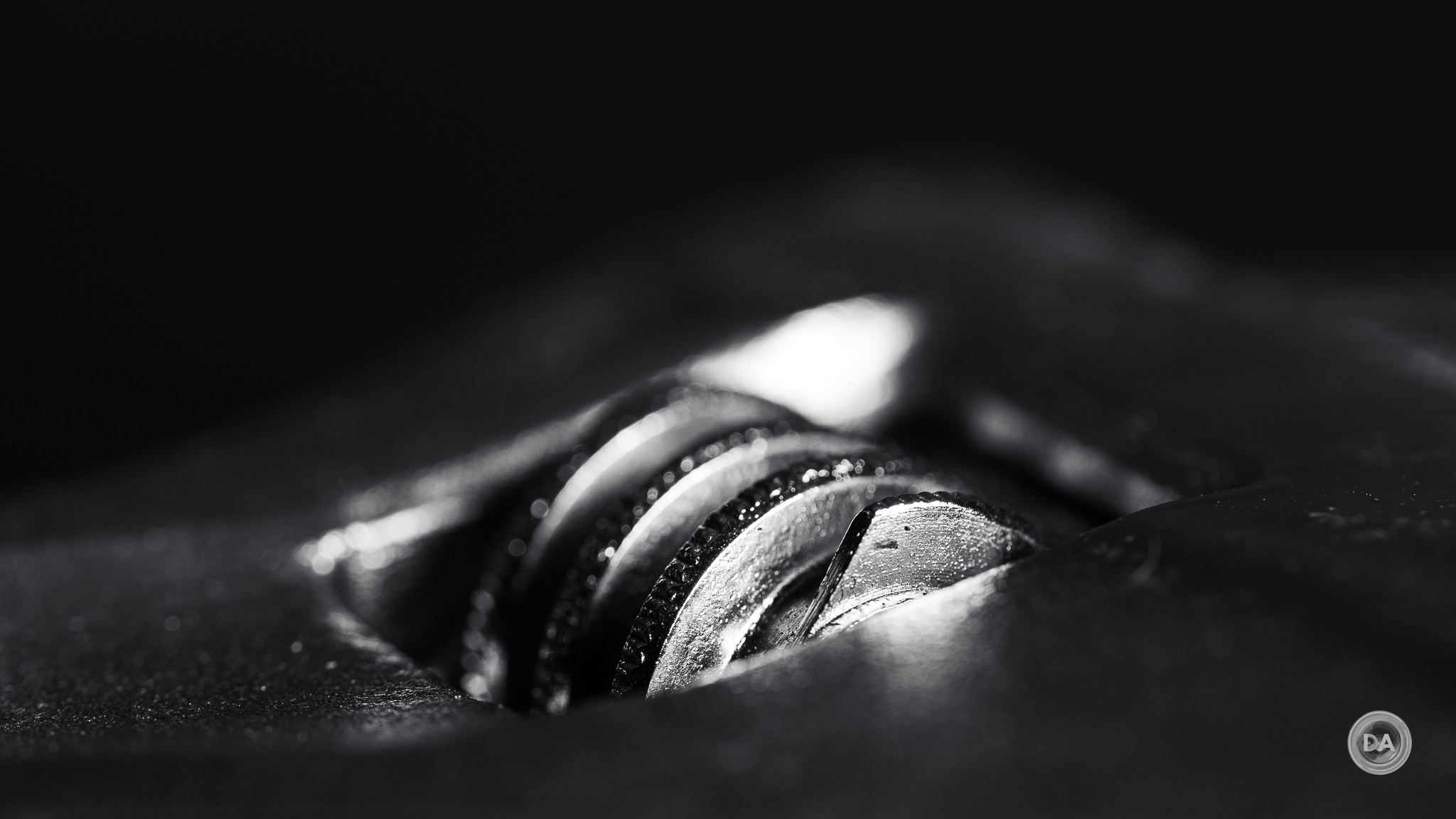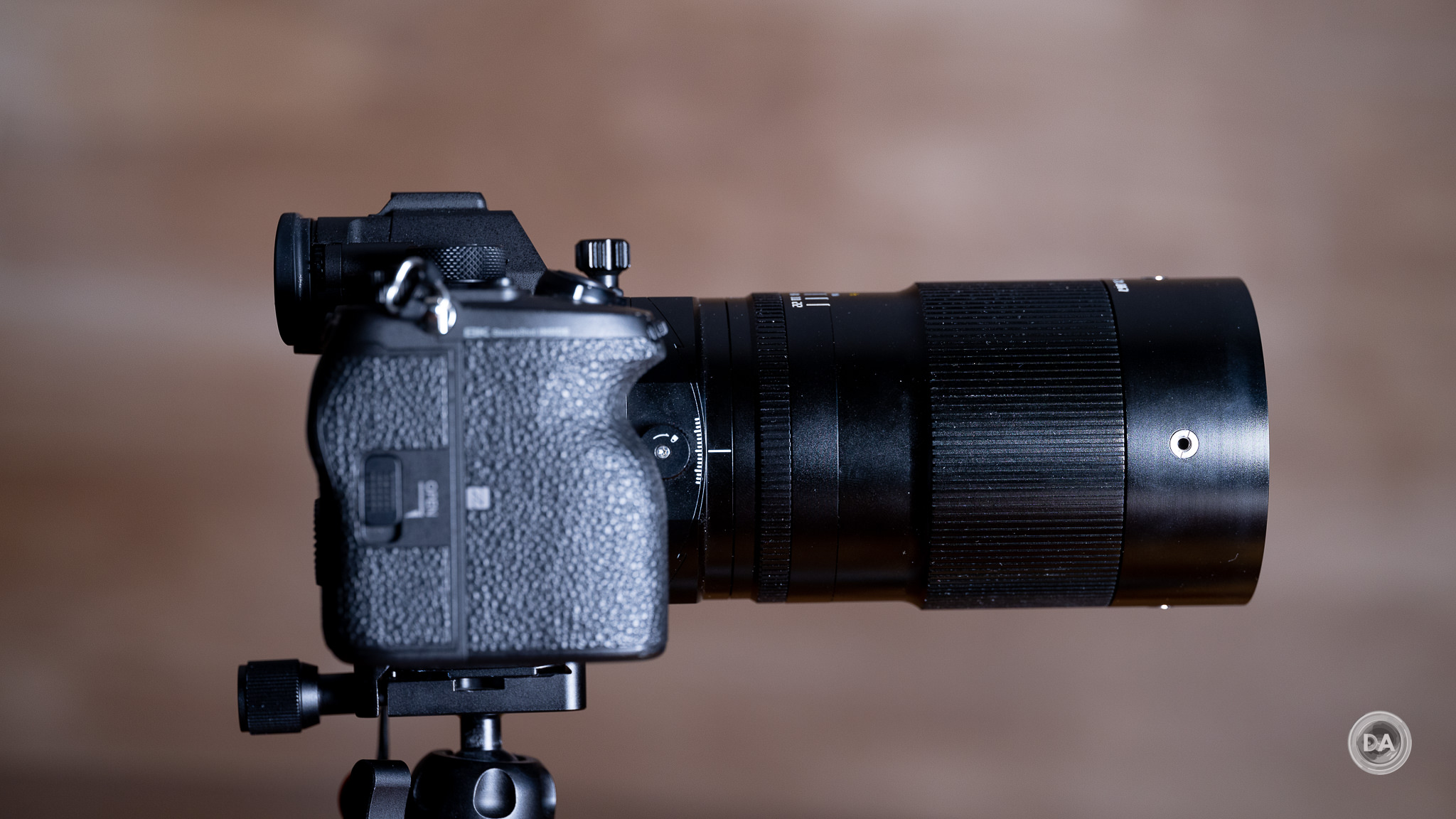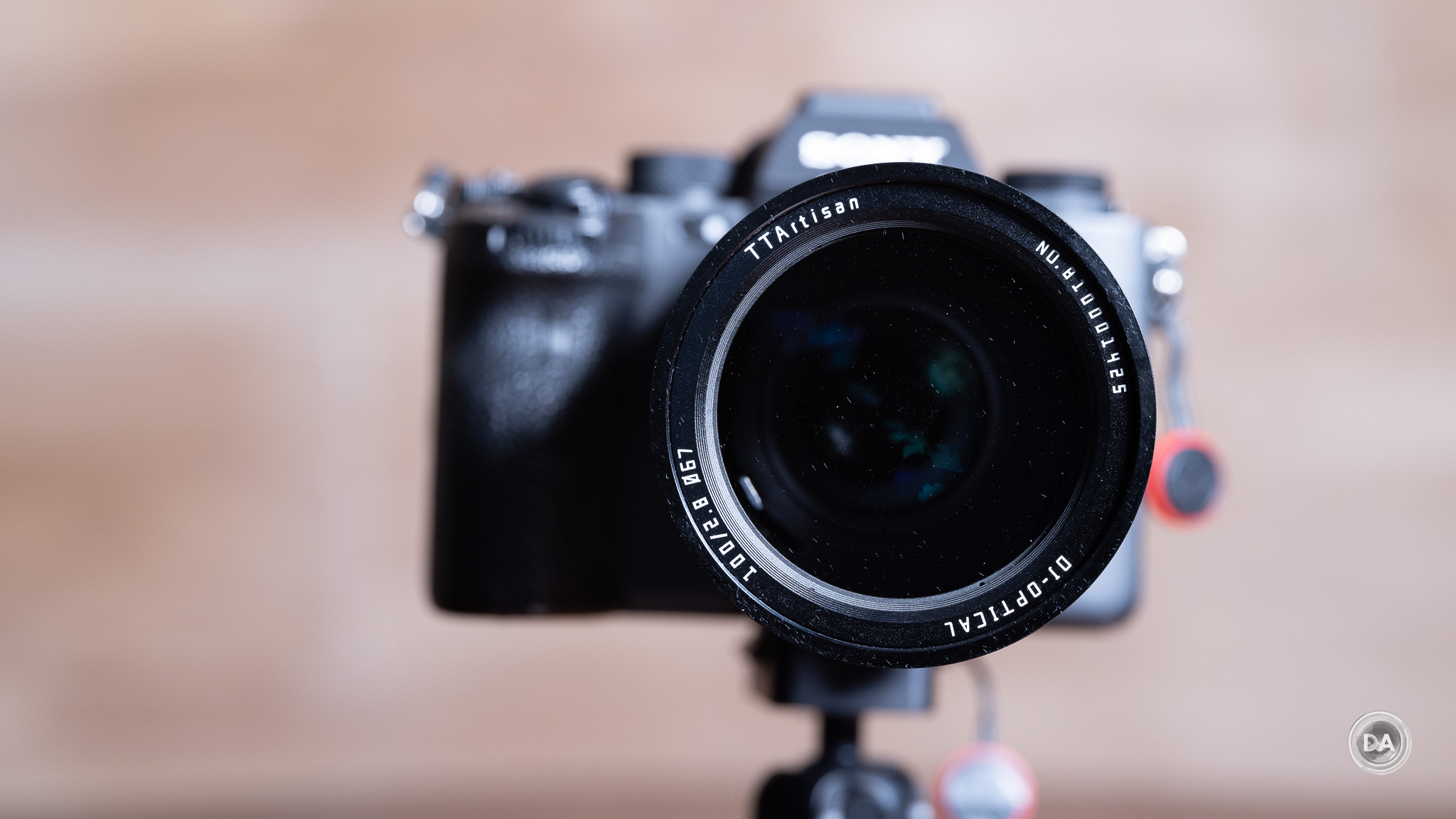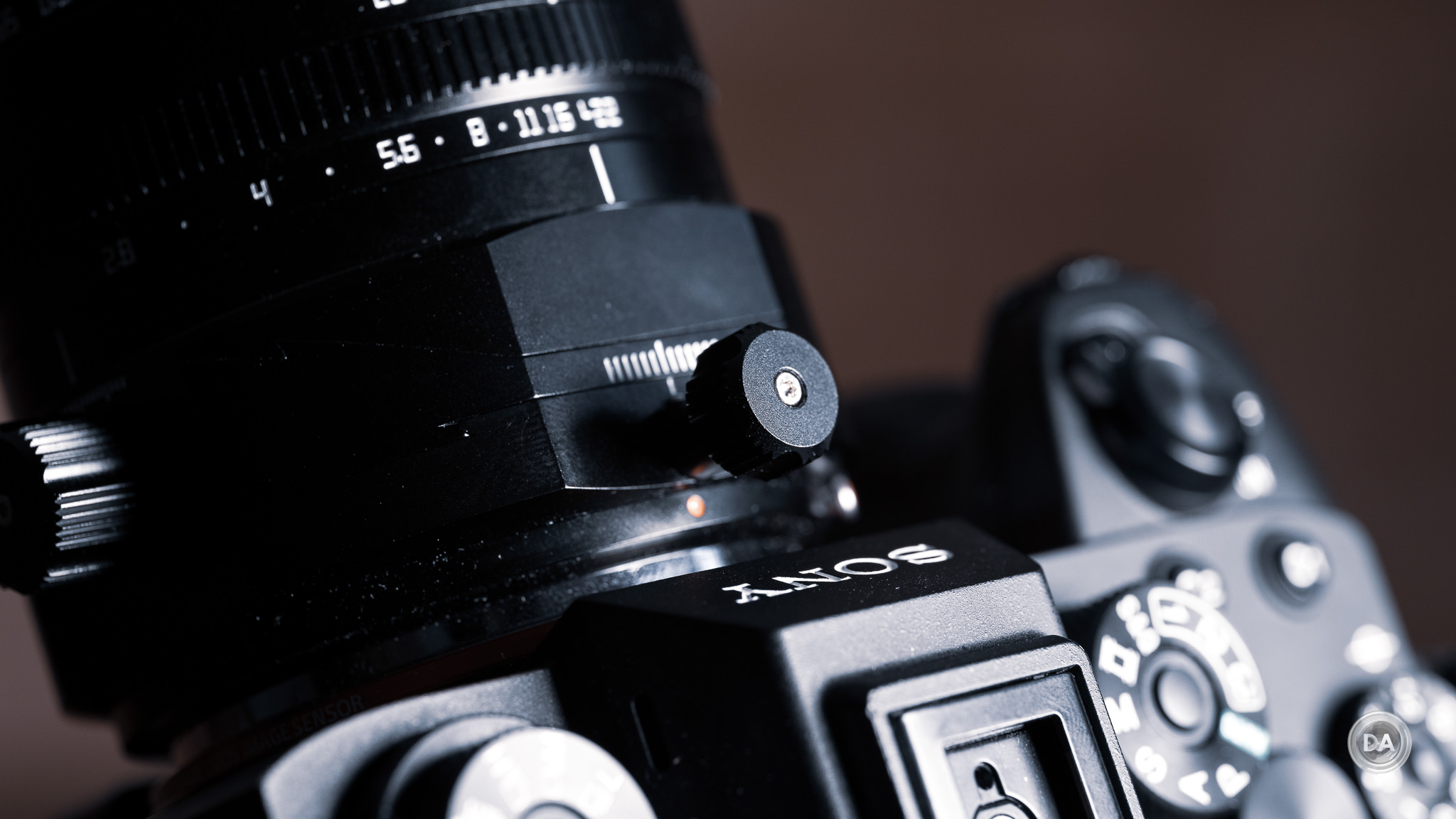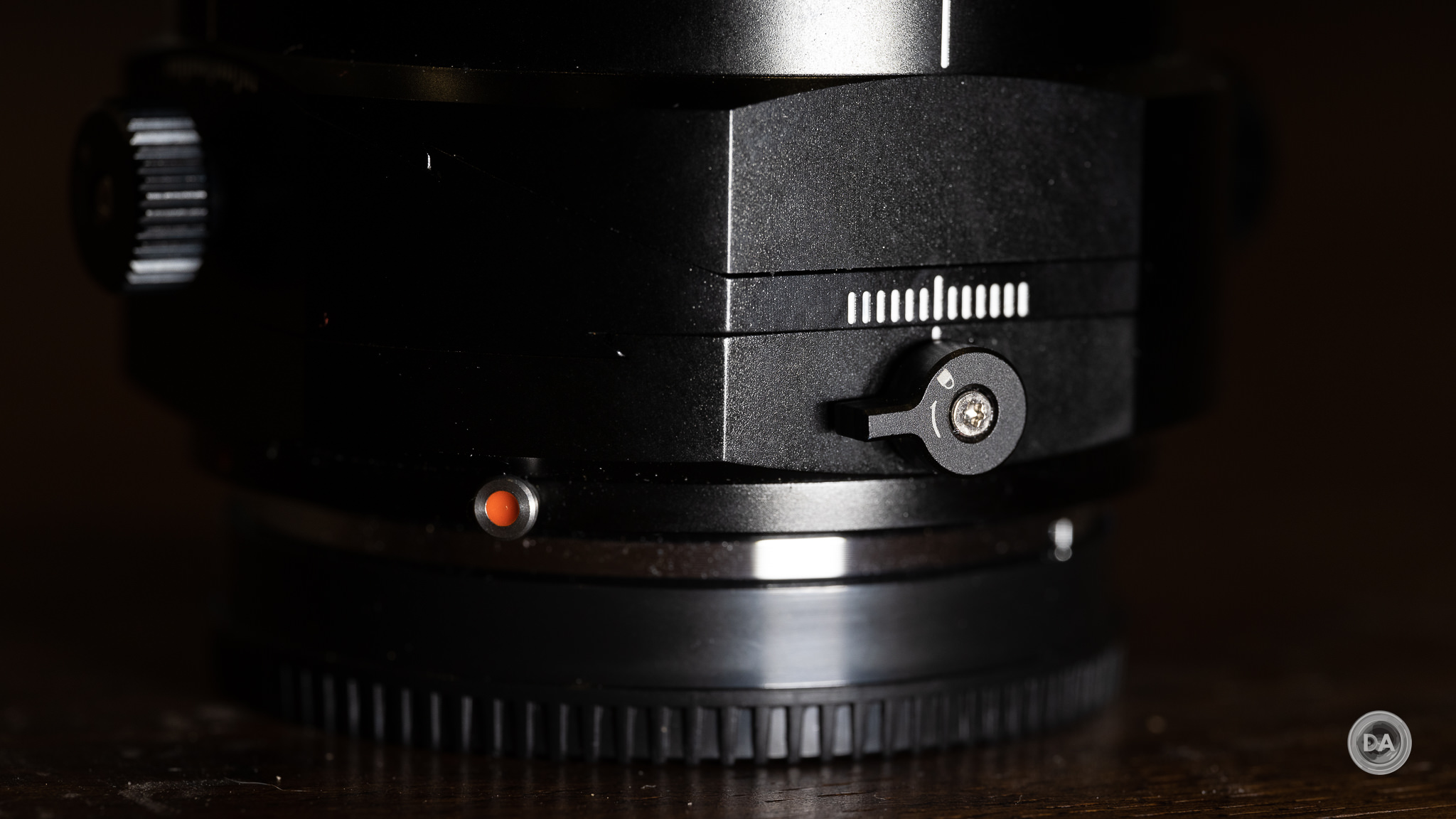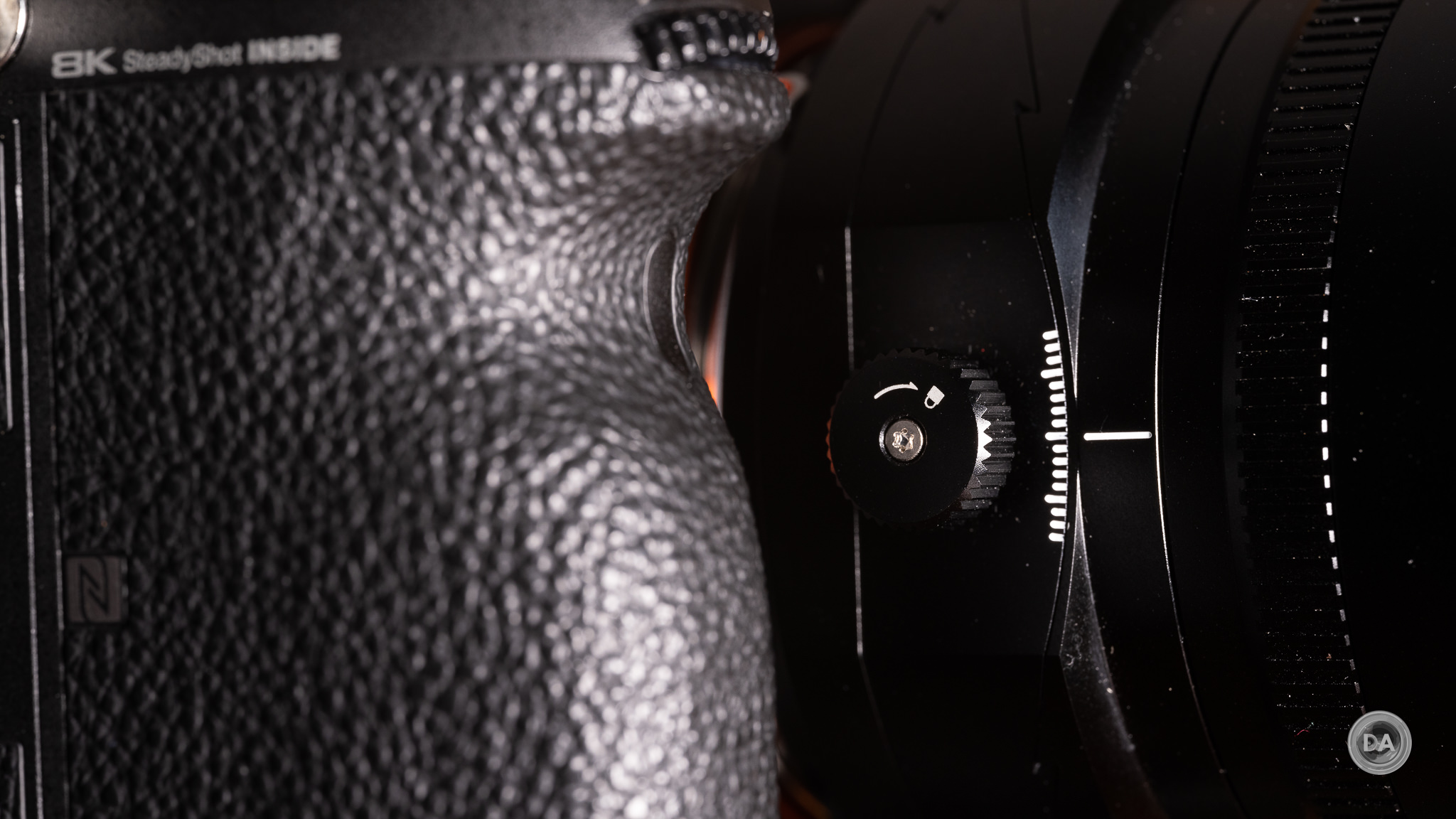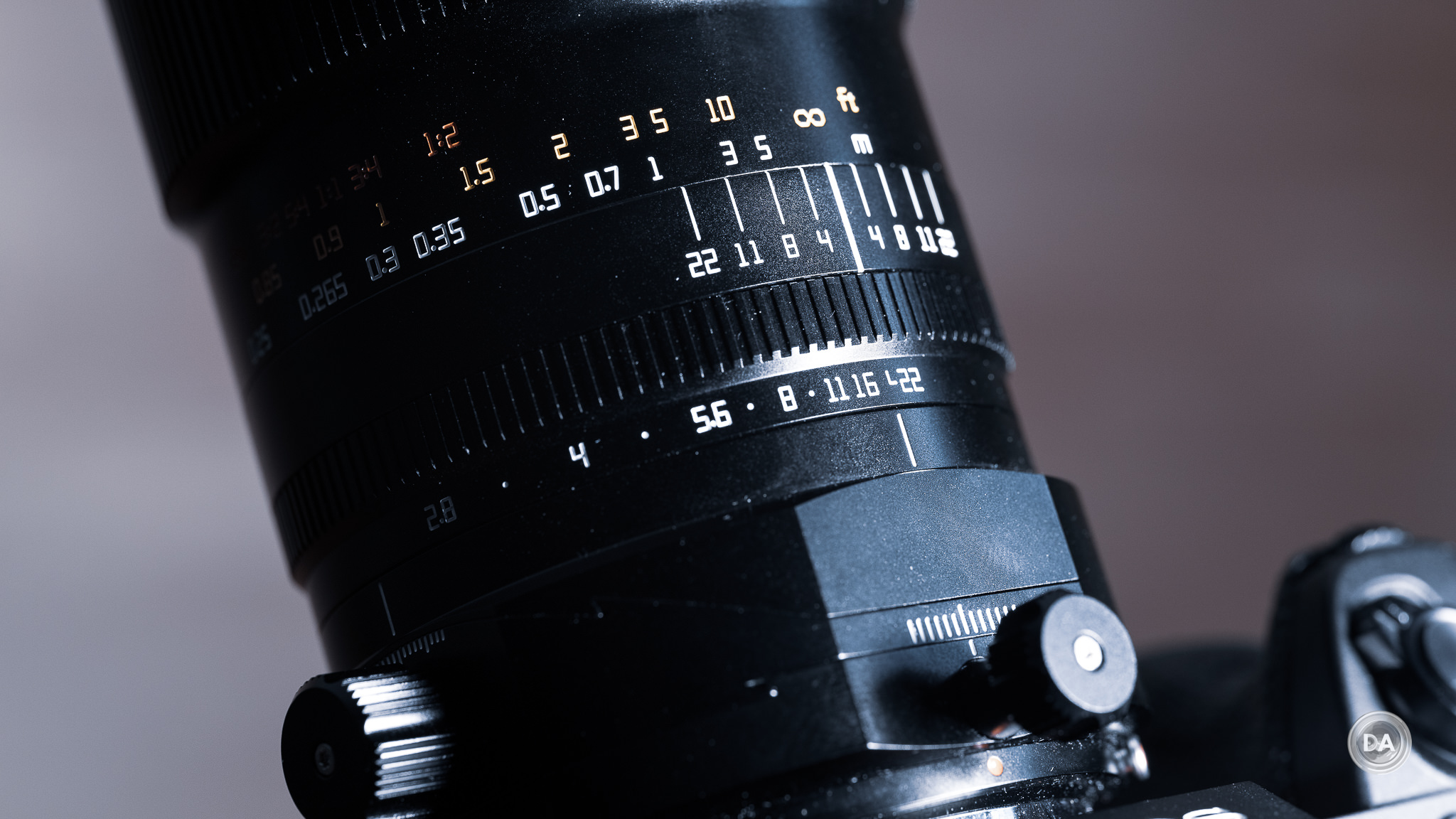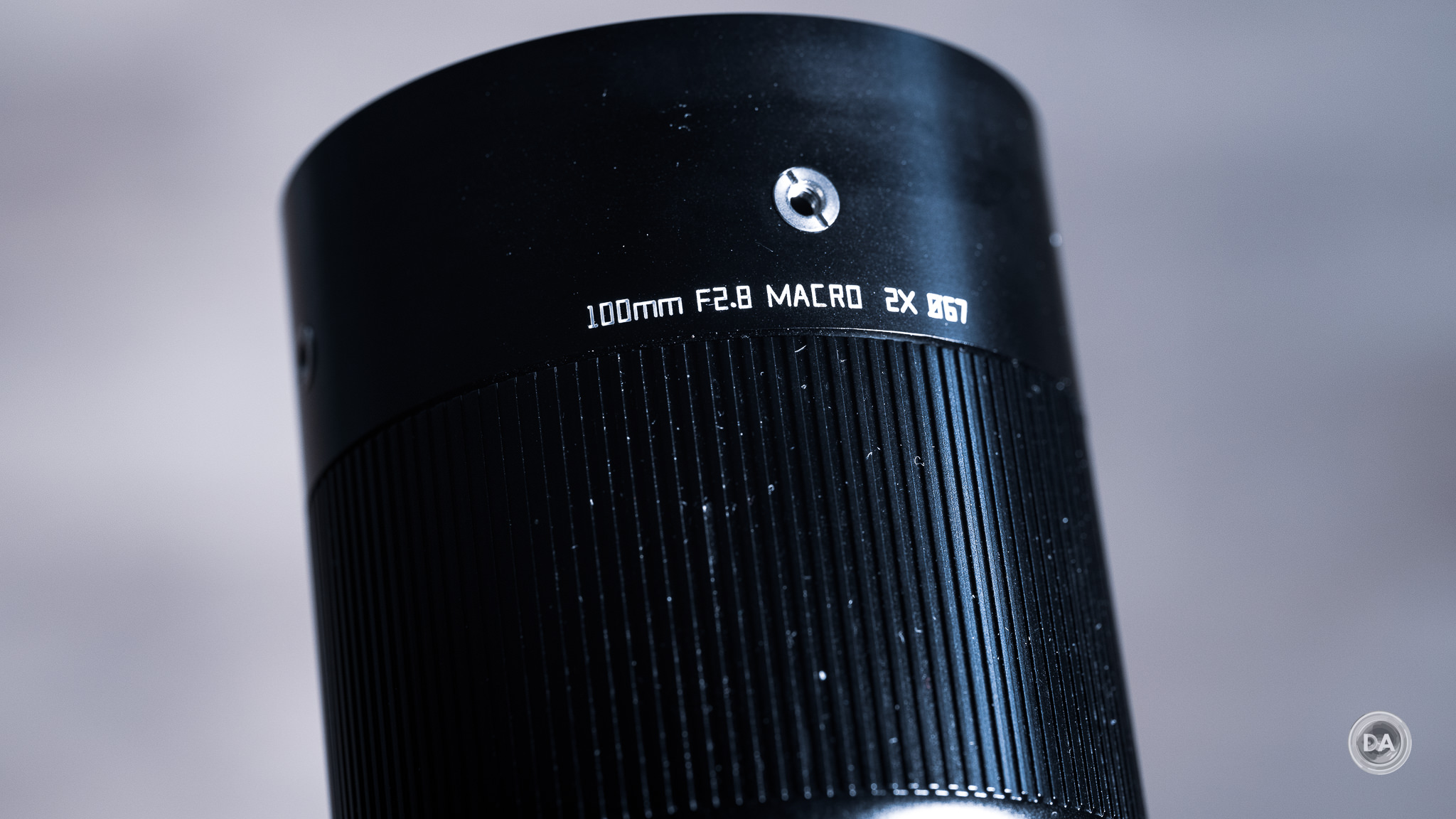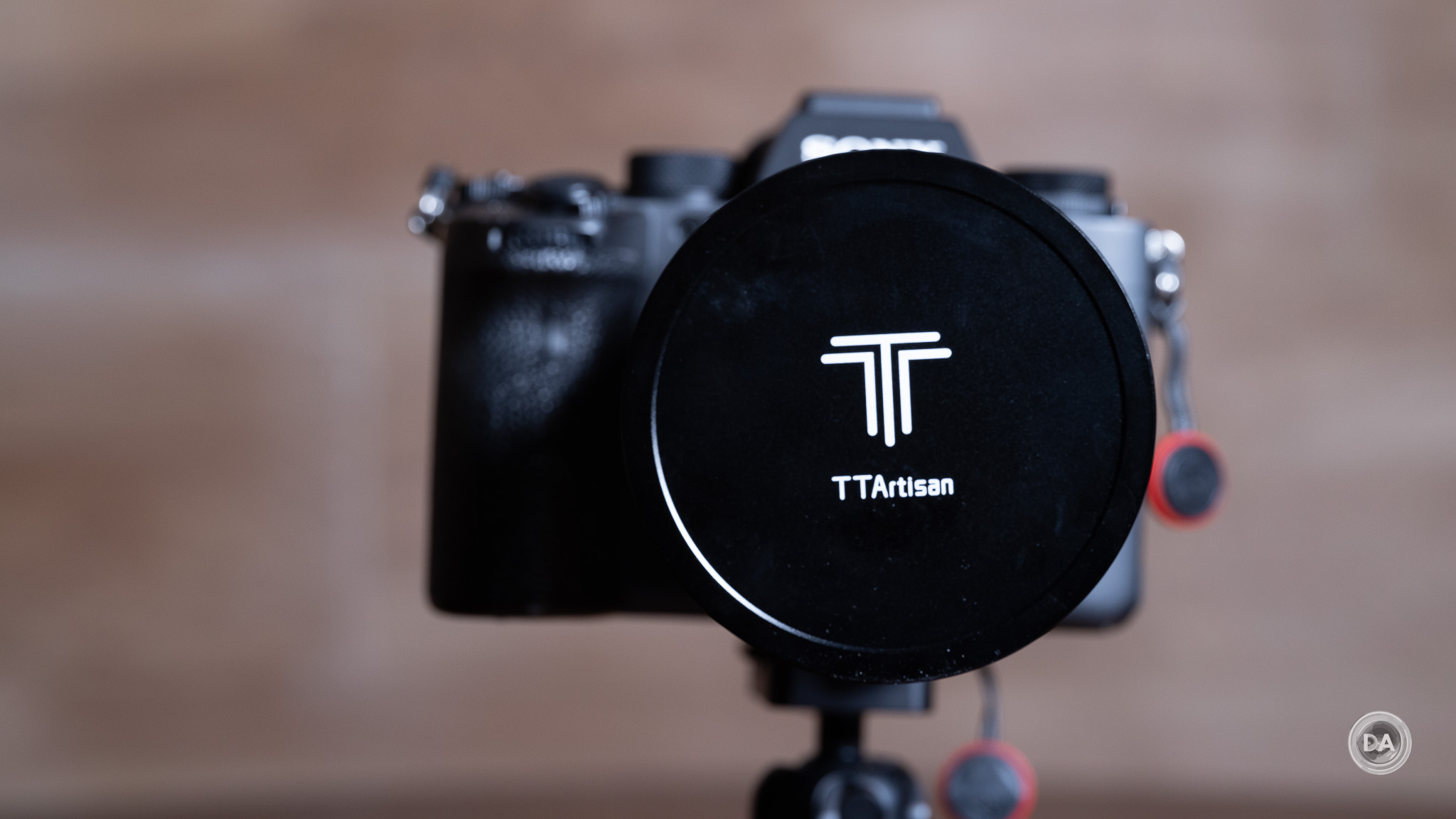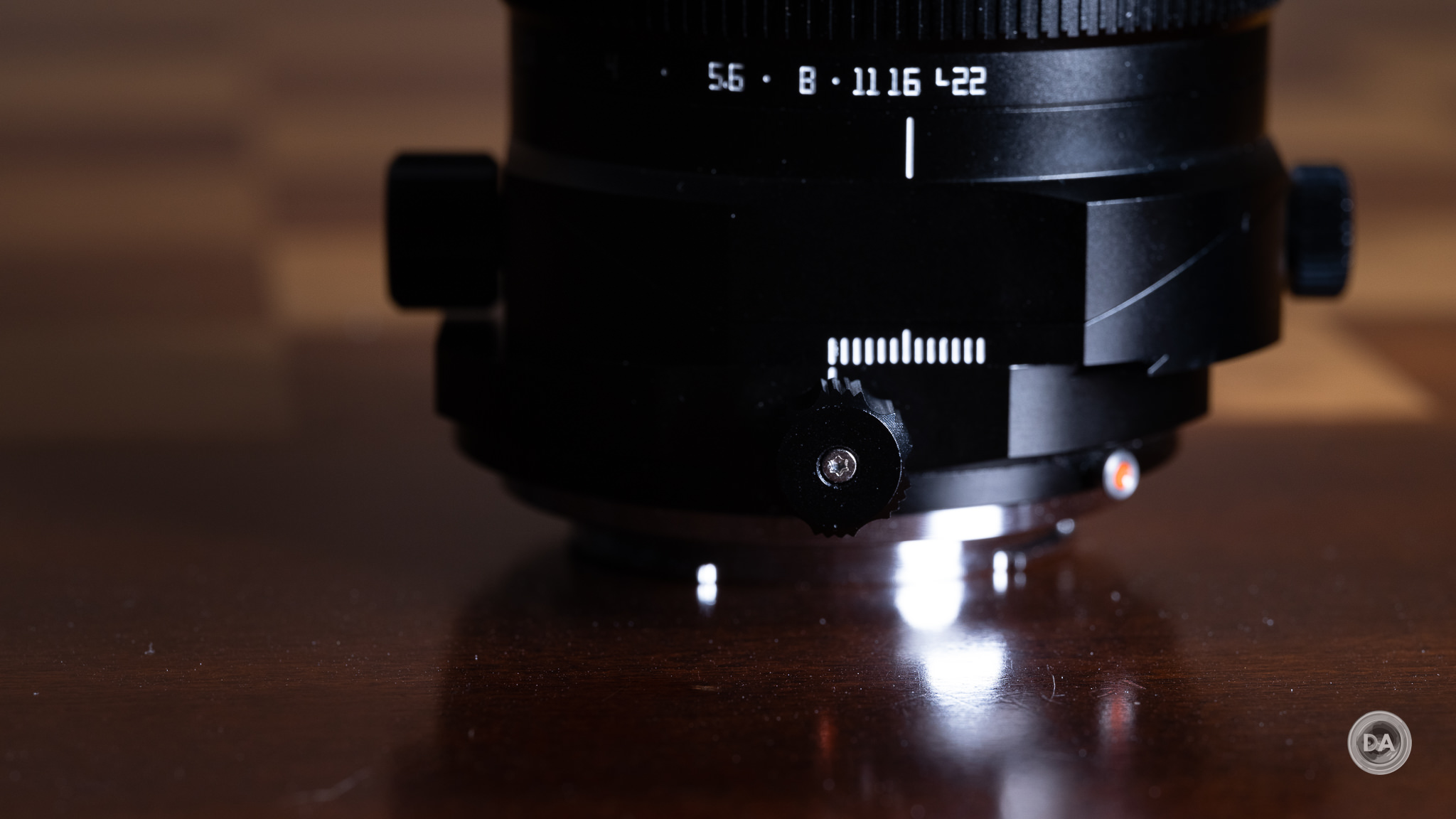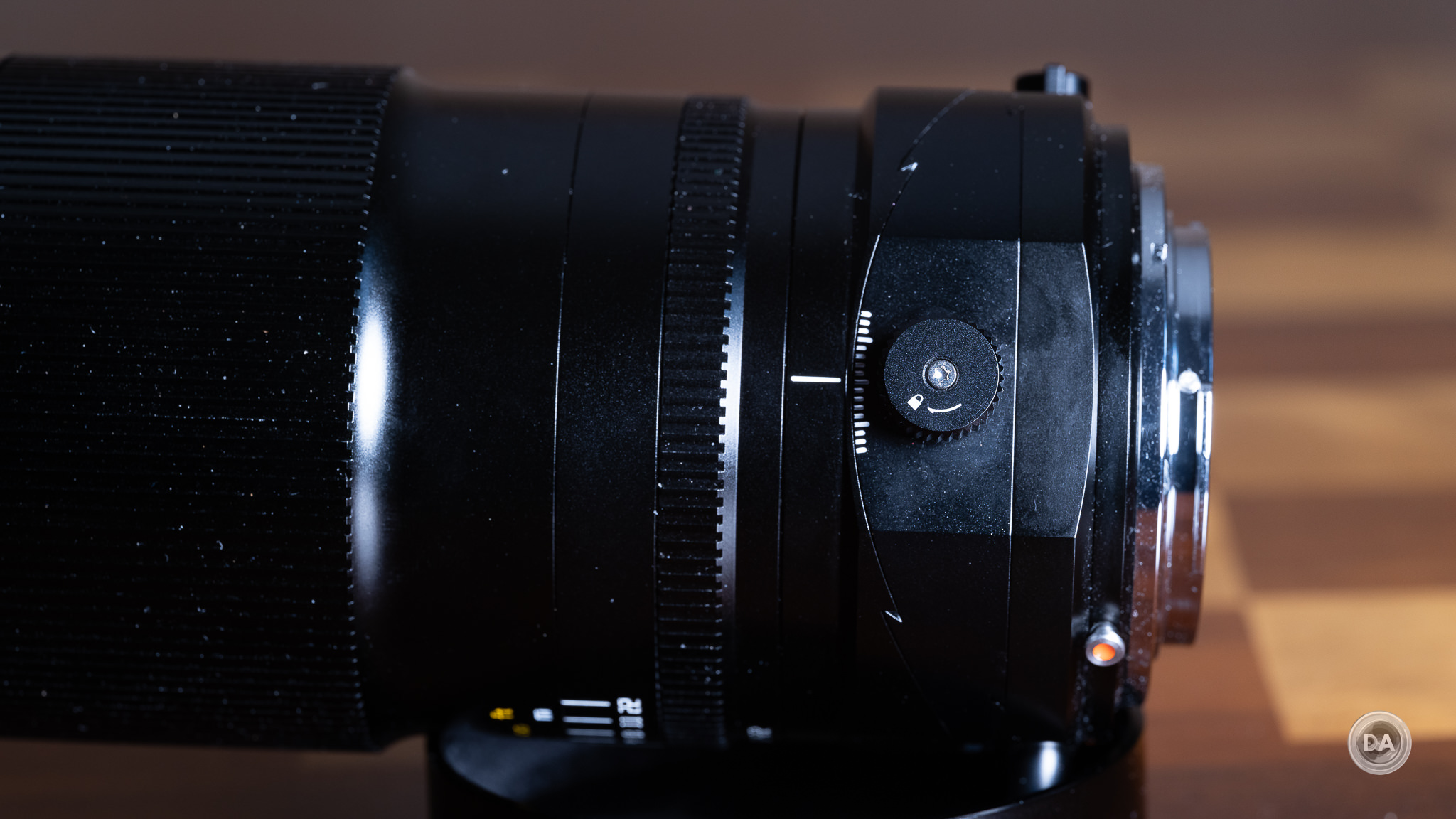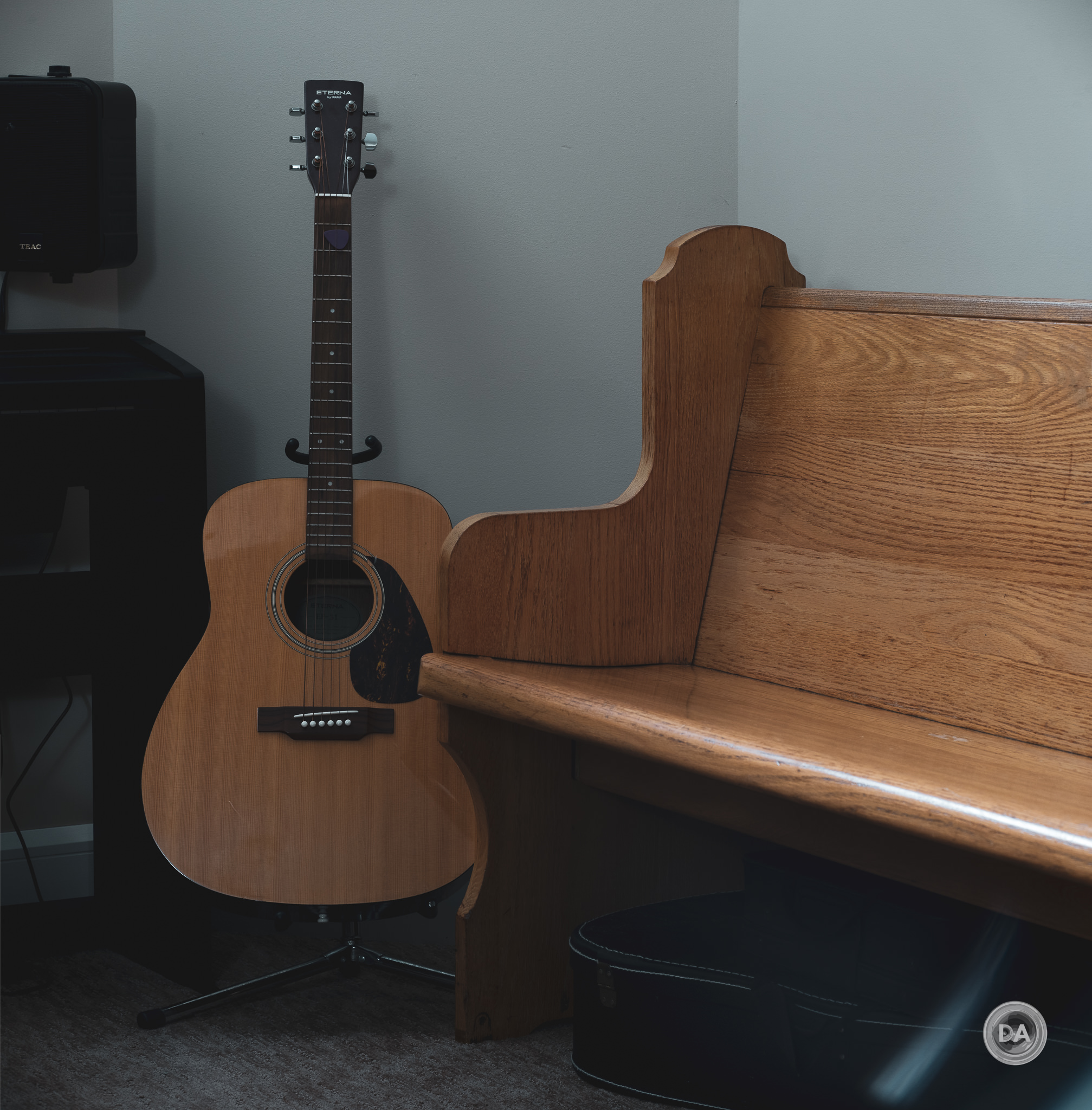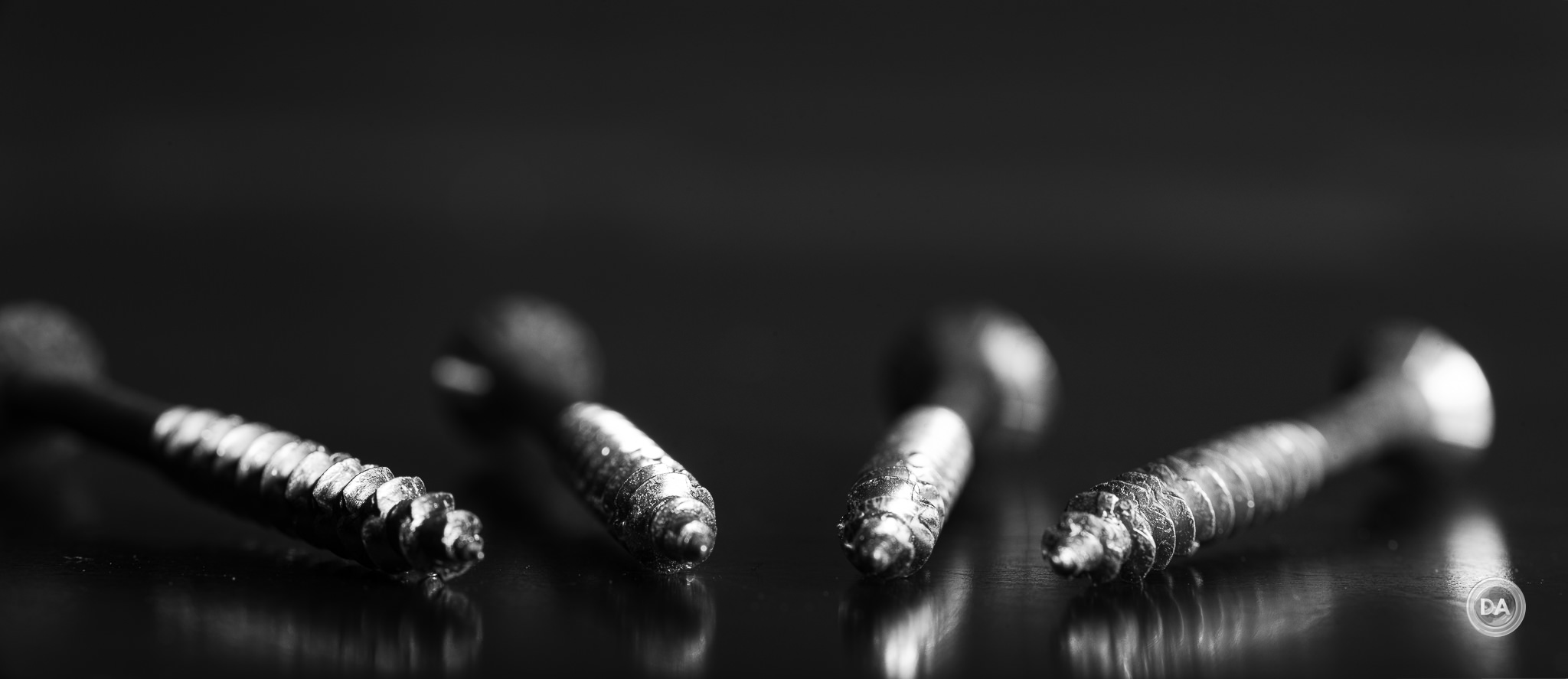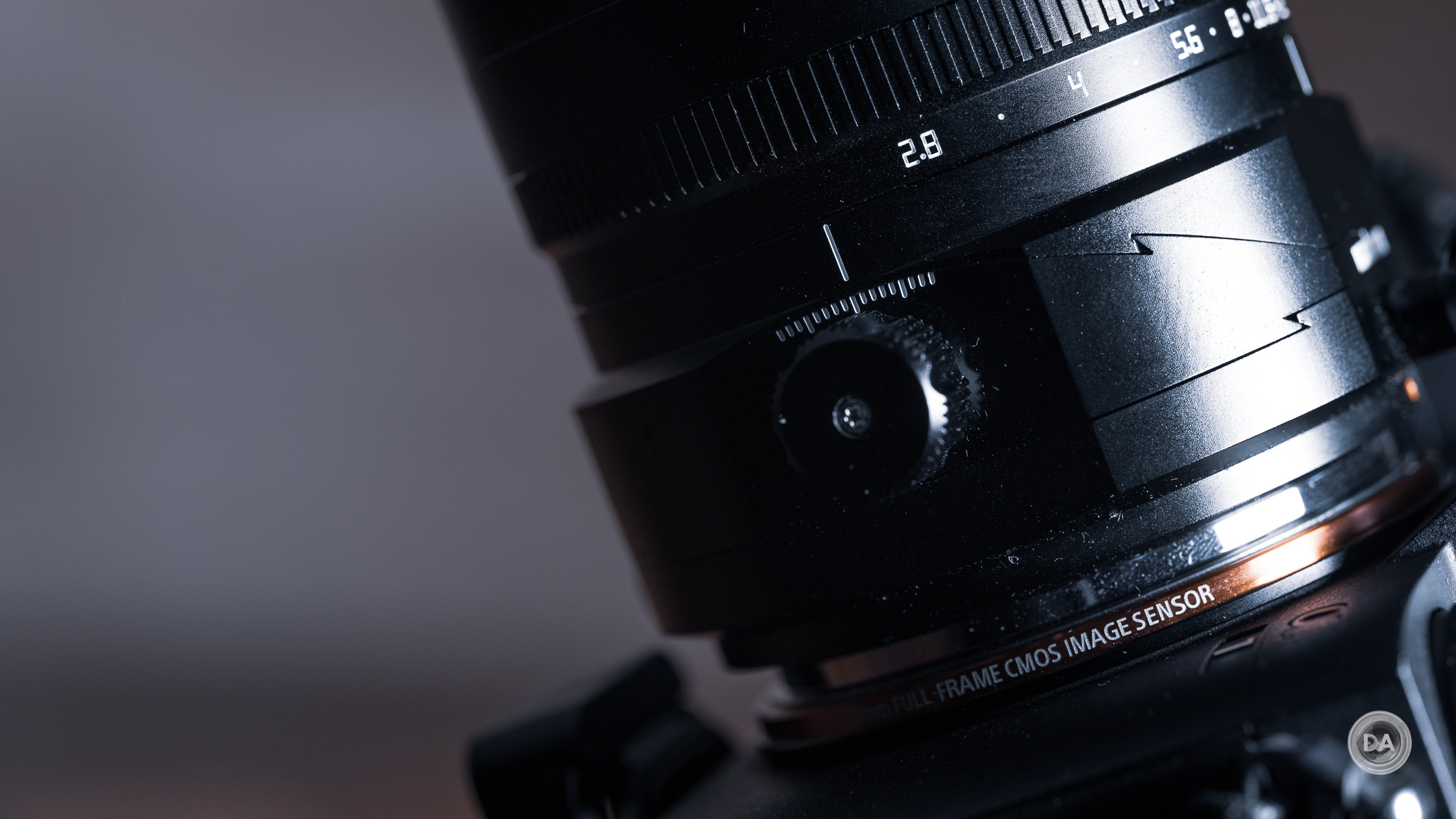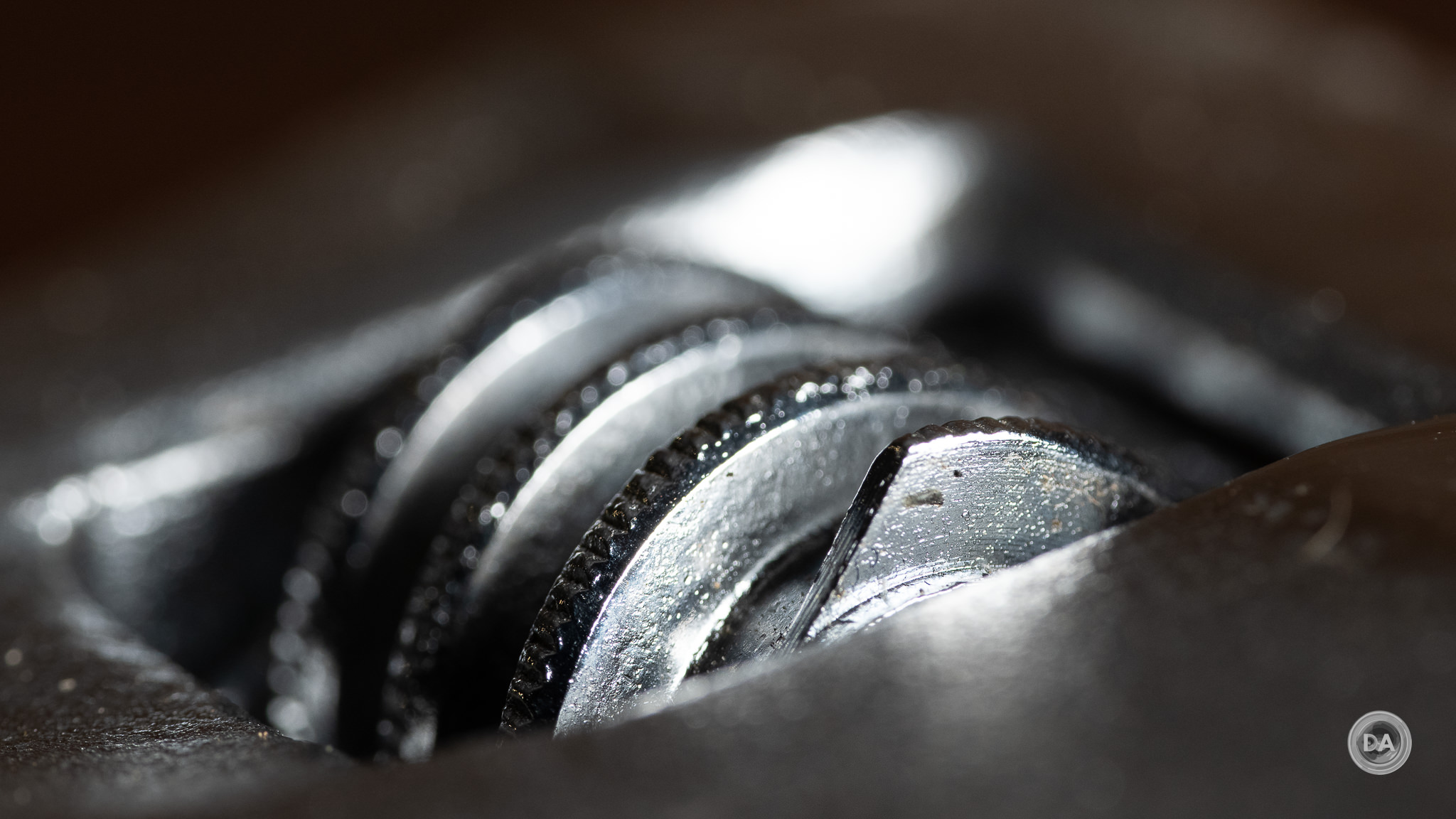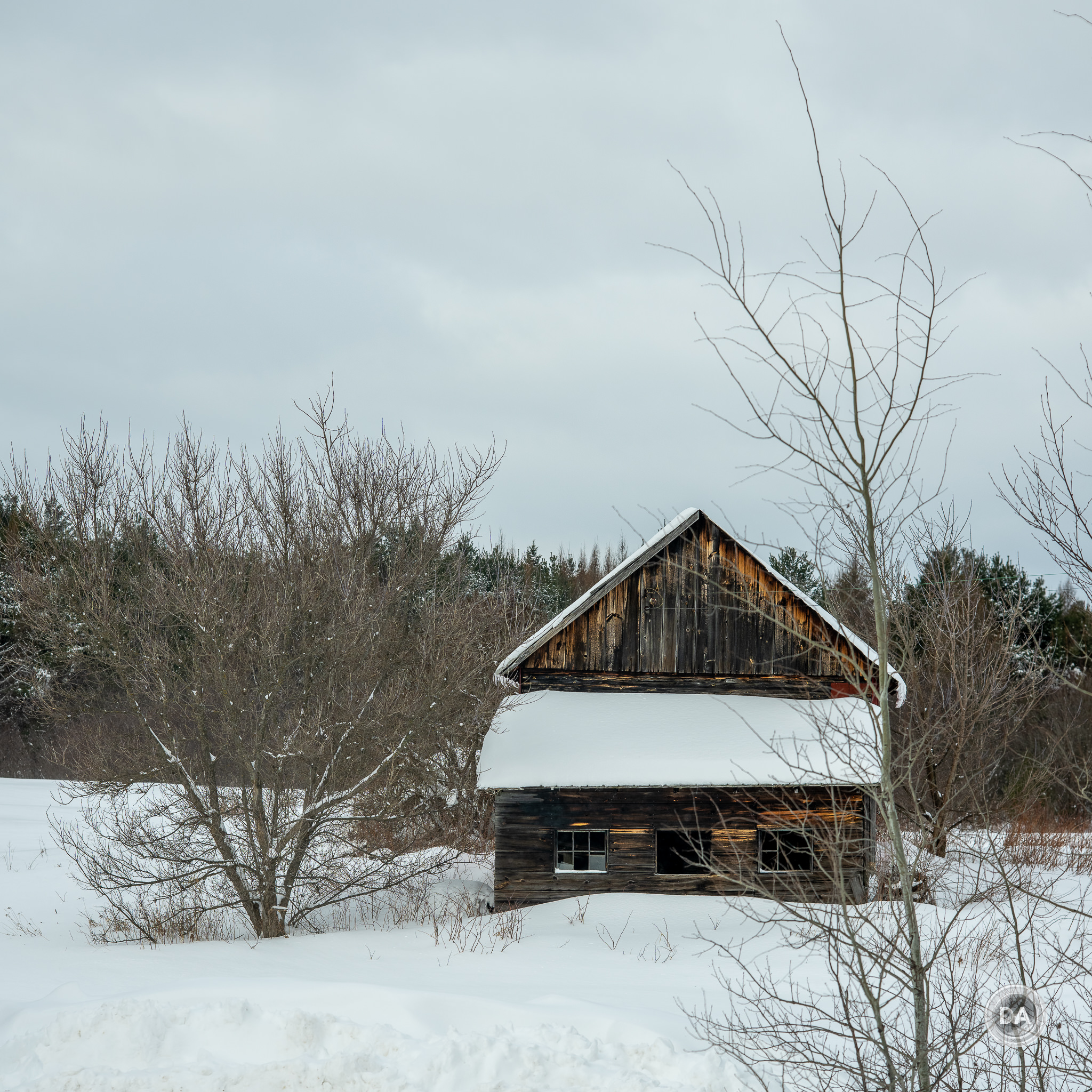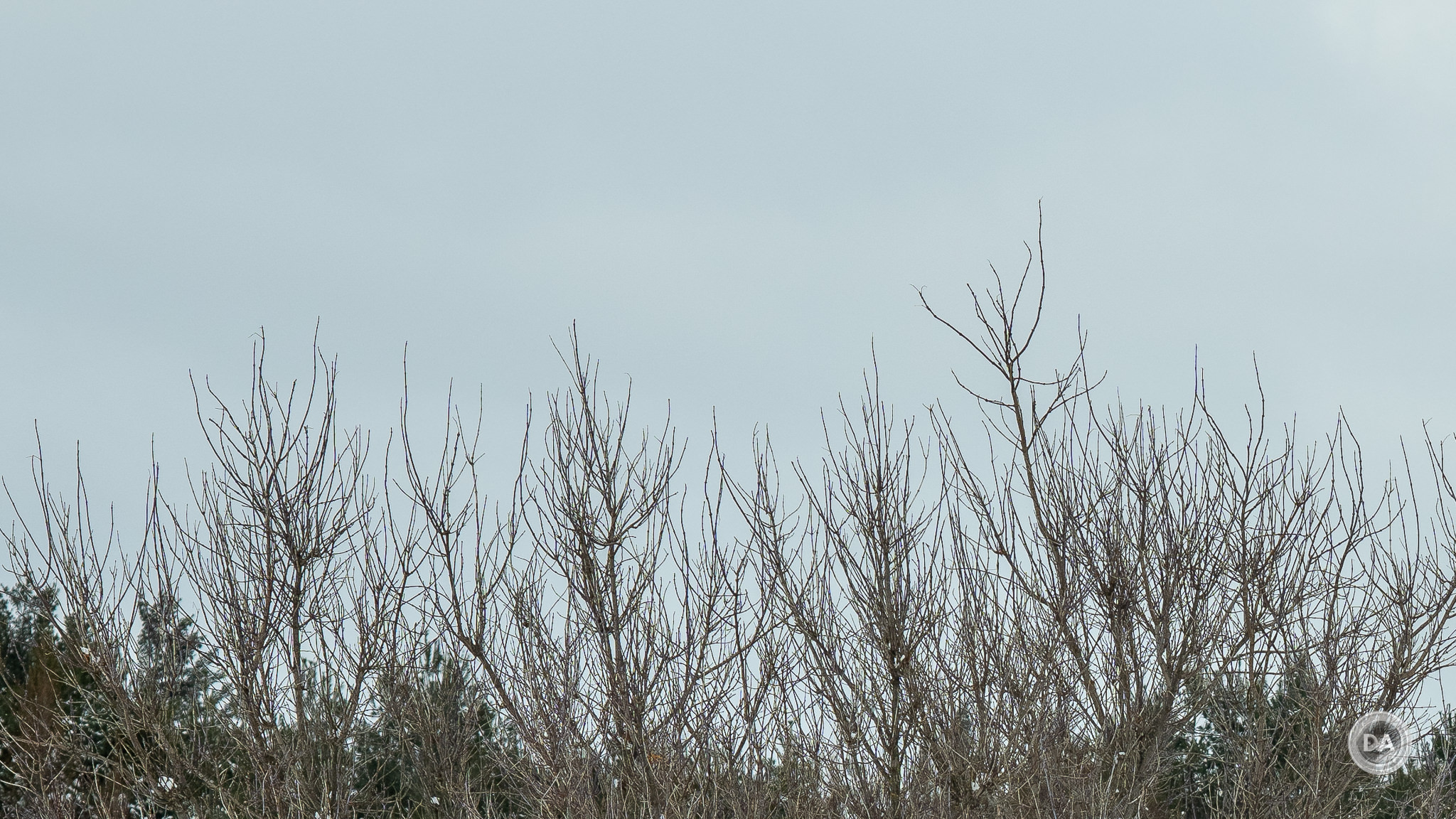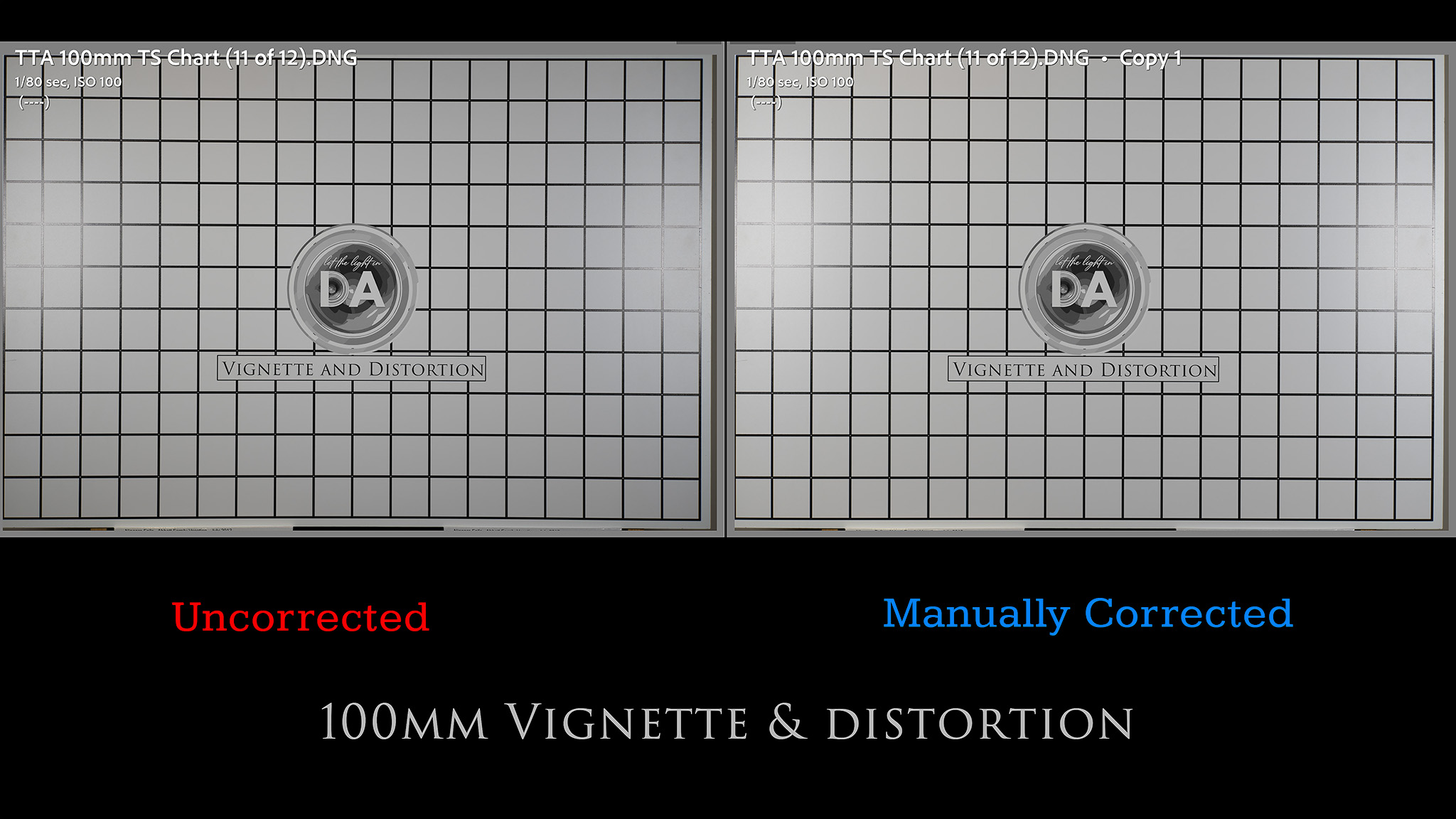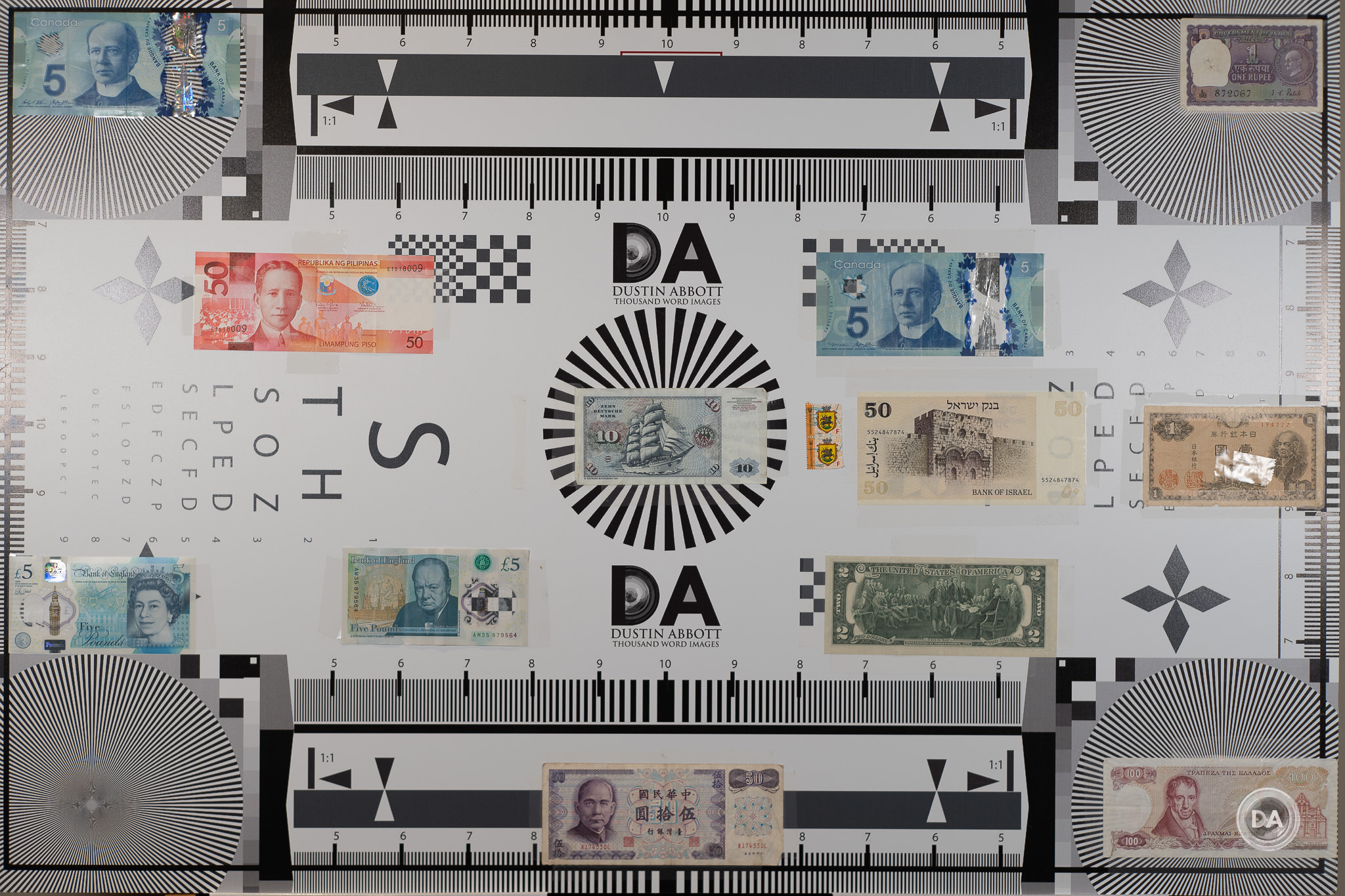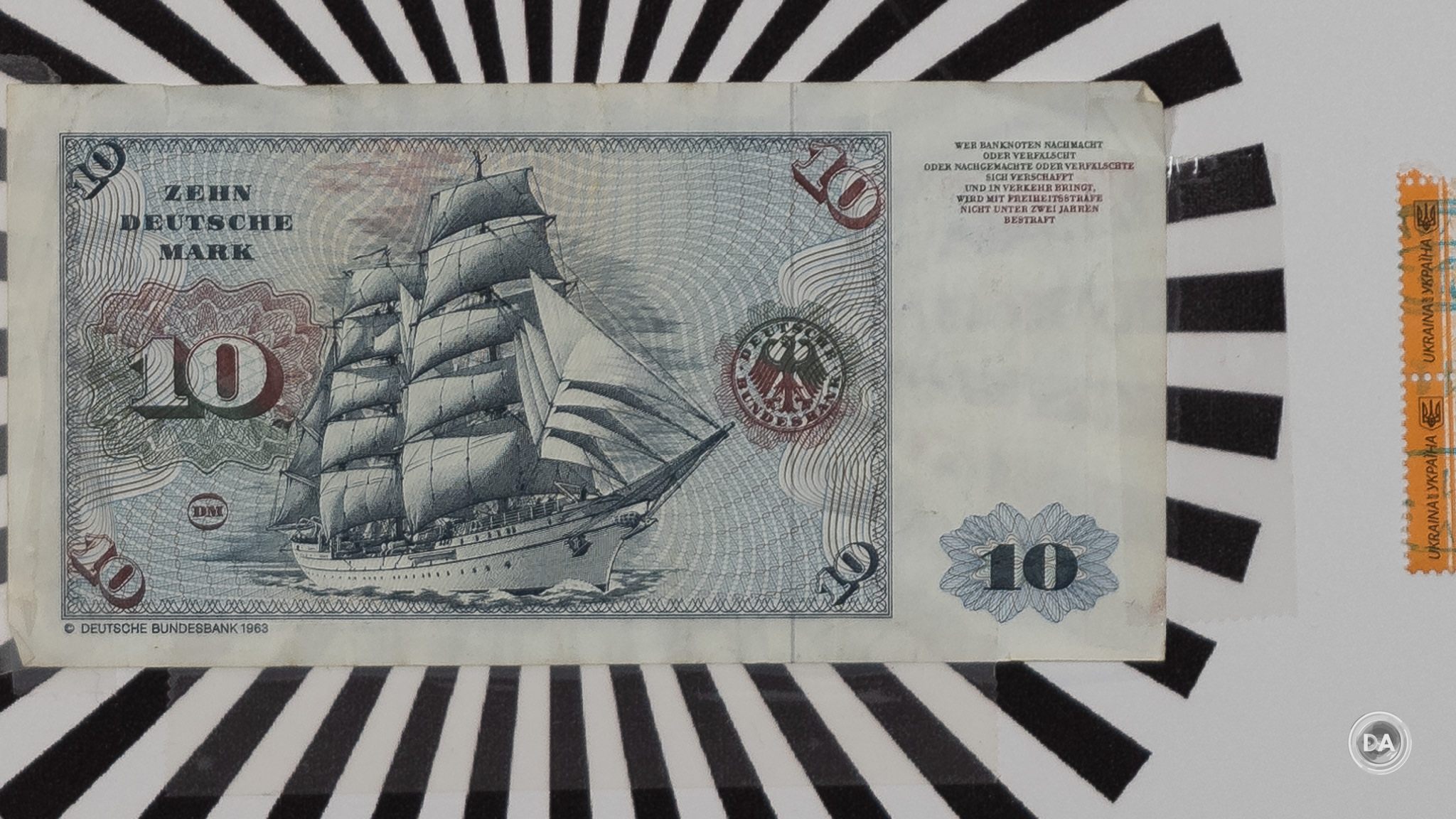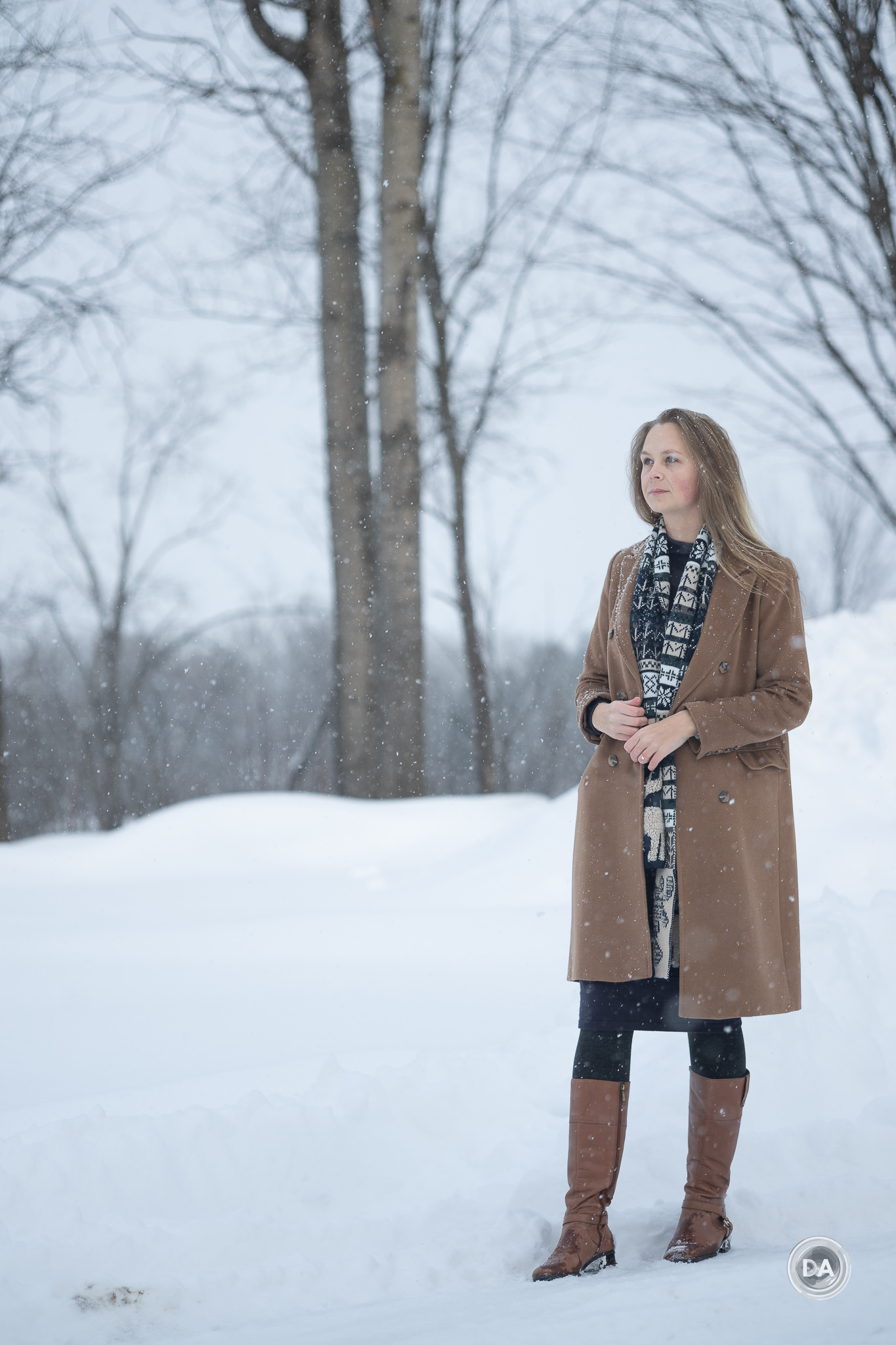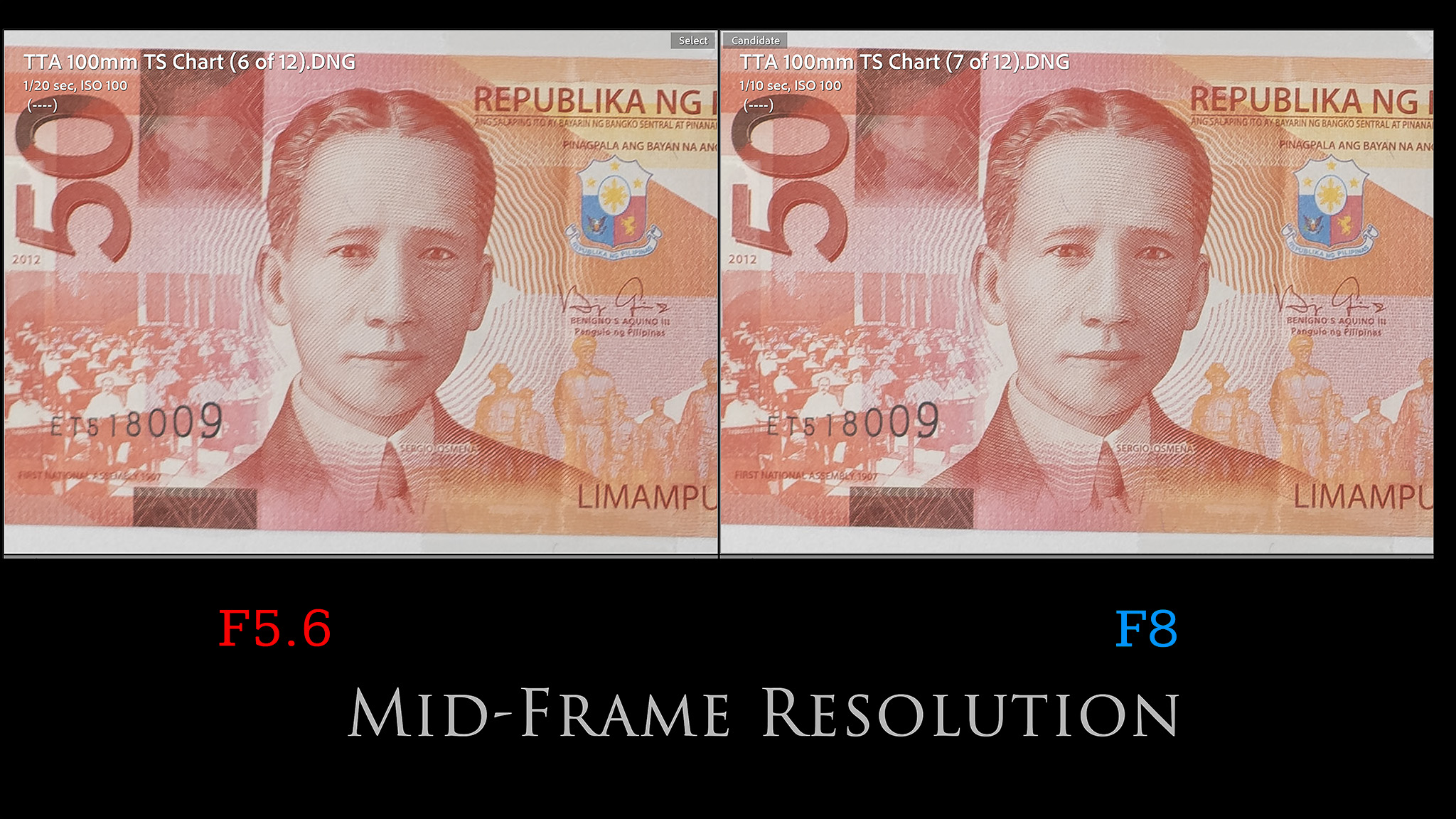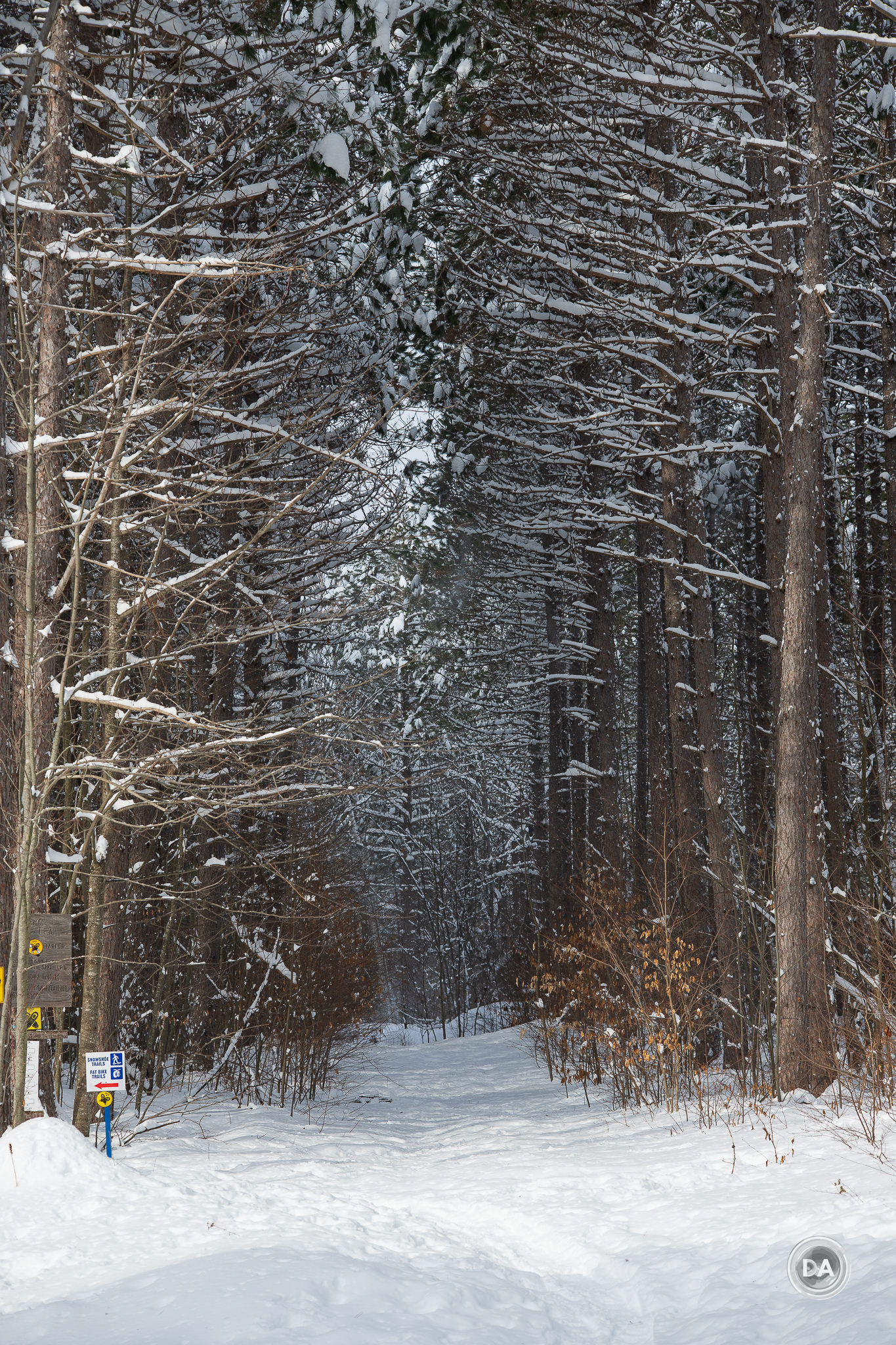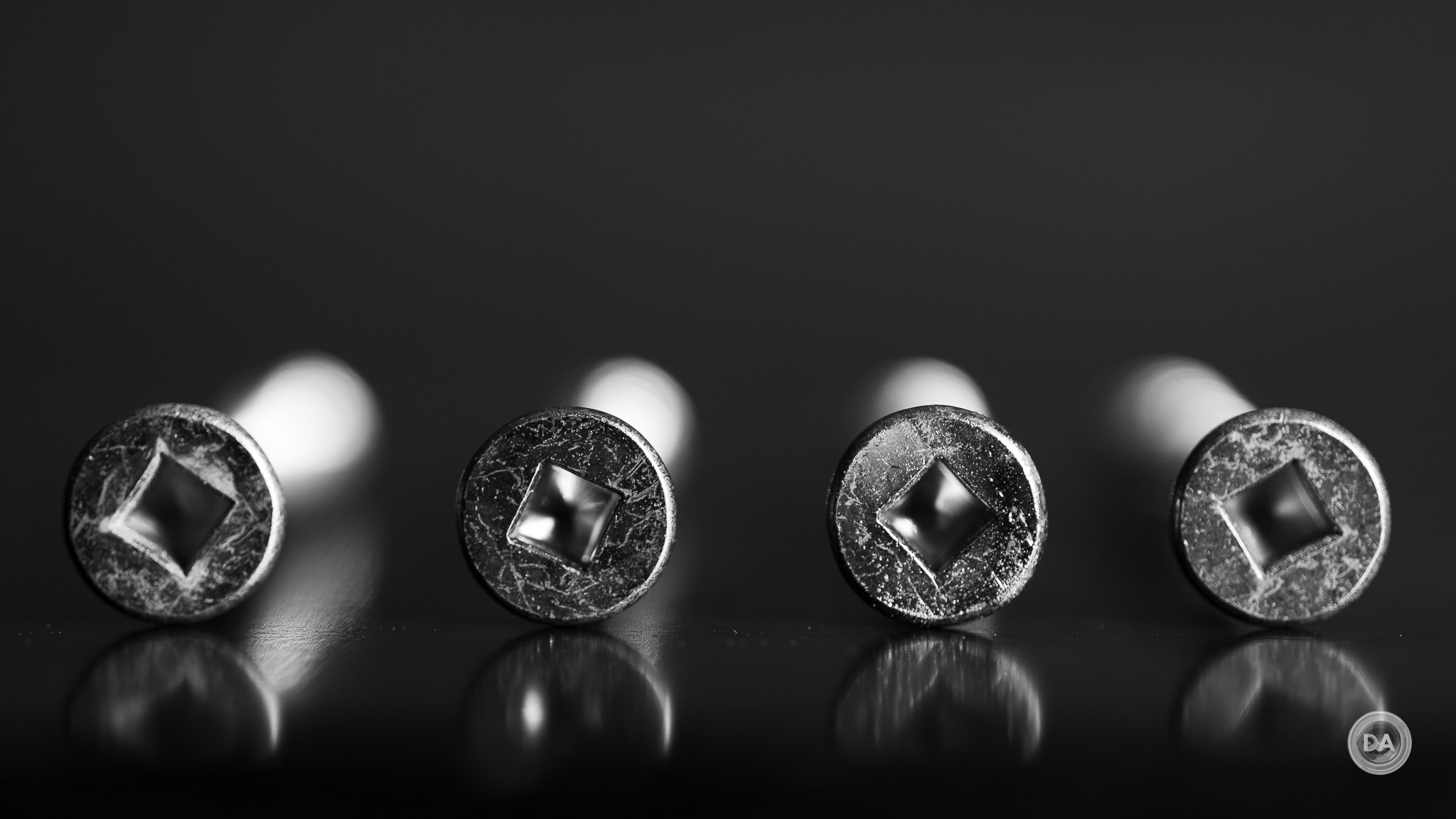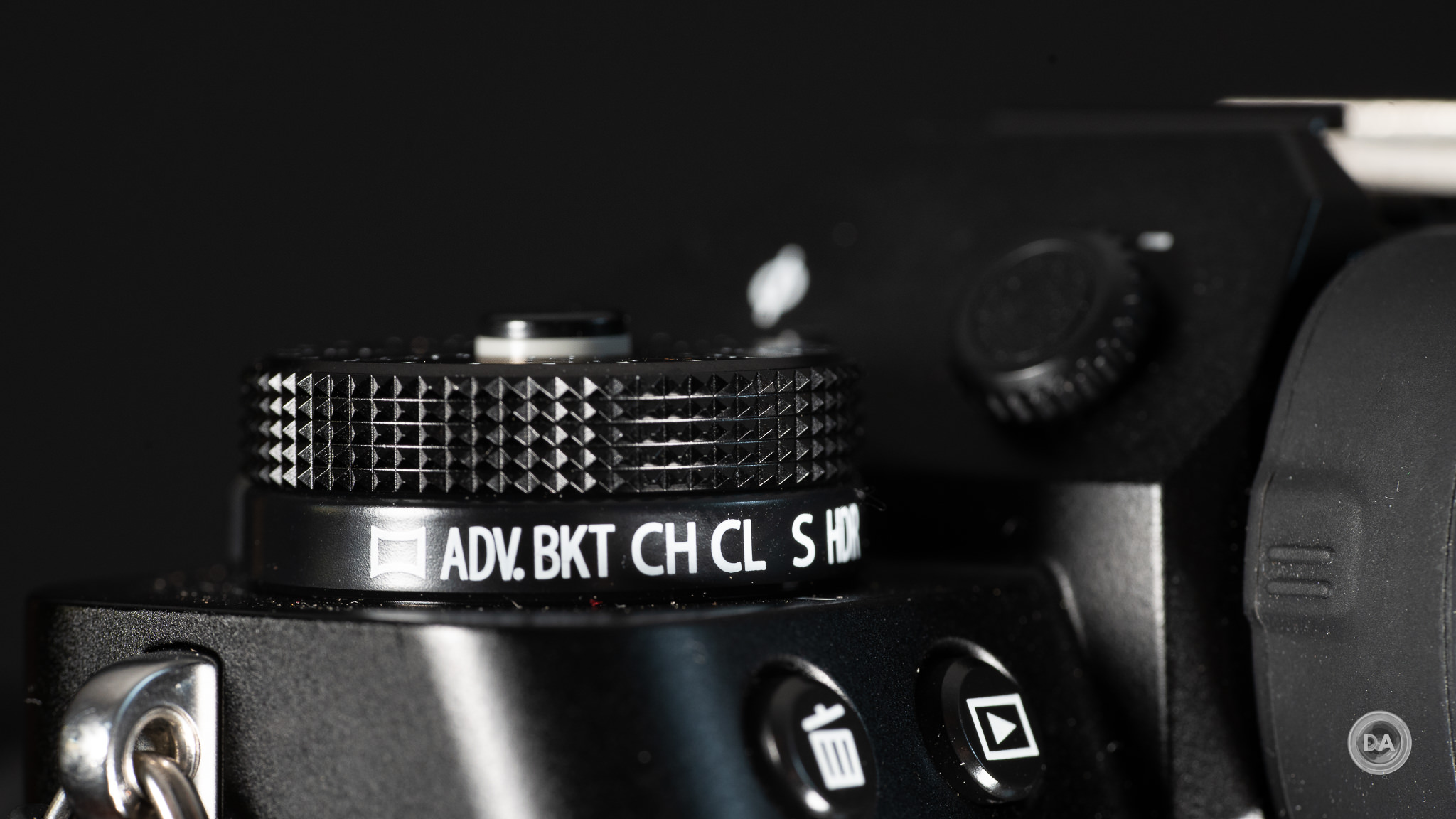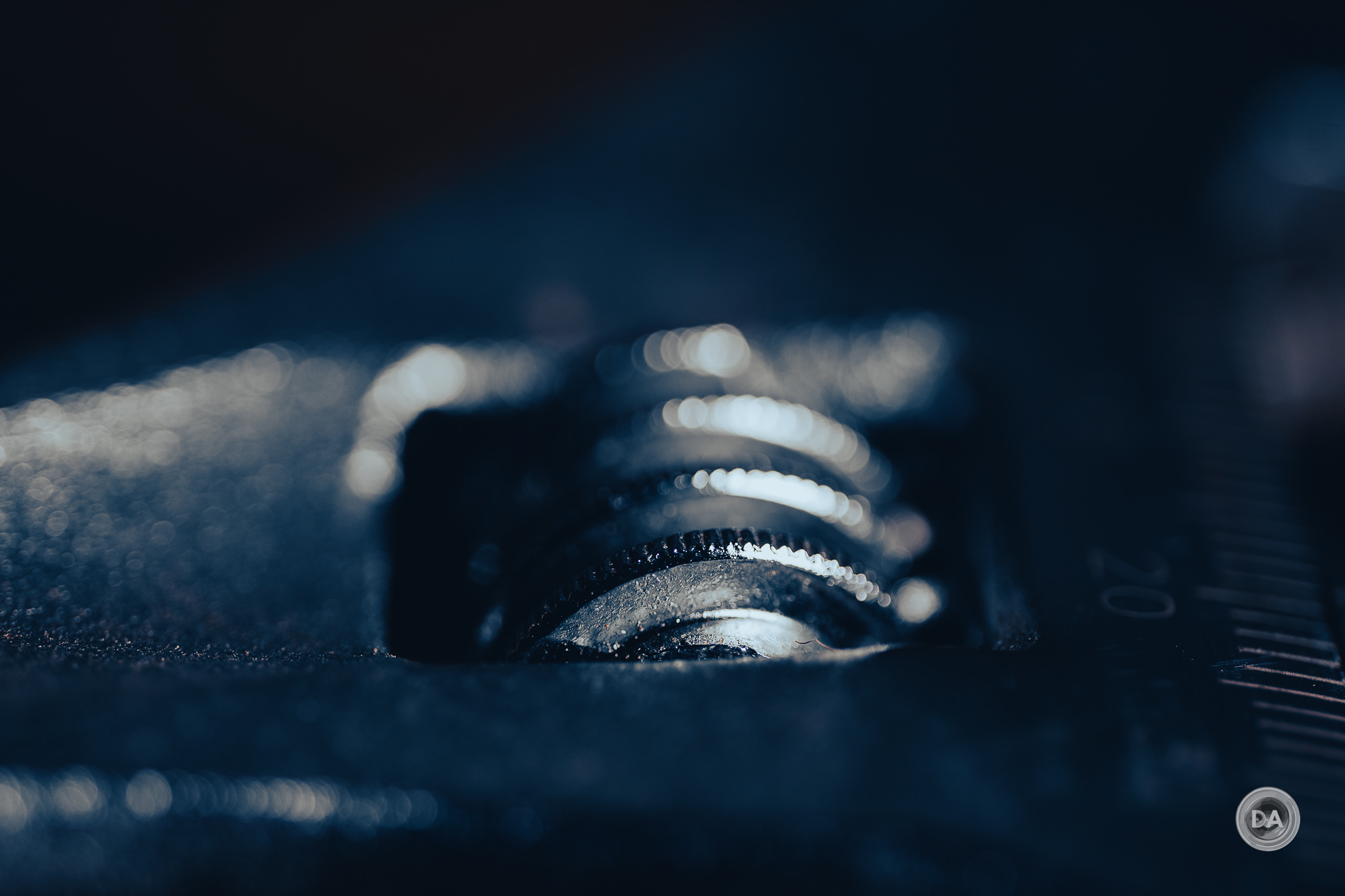Talk about ratcheting up the complexity! I’ve reviewed a number of TTArtisan lenses before, and they have mostly fallen into the categories that are filled by a lot of what I call “Boutique Third Parties”. These include various manual everything prime lenses with varying maximum aperture sizes. While engineering for larger apertures (like their F0.95 lenses) are more challenging, their newest lens adds a LOT of new moving parts. That lens is the TTArtisan 100mm F2.8 2X Macro Tilt/Shift (we’ll shorten that to TTA100M for this review).
Designing a lens that goes past 1:1 to 2:1 macro (2X) takes a lot of engineering. That’s twice as high of magnification as most macro lenses. Designing a tilt/shift lens takes even more engineering. I’ve never personally seen a lens that combines both of these elements before, so this is certainly a courageous move for TTArtisan, particularly since this is designed for full frame mirrorless mounts (I’m testing it on Sony E-mount, but it will also be available for Canon RF, Nikon Z, Leica L, and then smaller sensors like Fuji X and M43). This is also the longest focal length that TTArtisan has tackled to this point, which makes it a very interesting lens.
There are a variety of things that you can do with both ultra macro and tilt/shift, but it does mean that this is primarily going to be a “tripod lens”. Trying to do 2x macro work handheld (even with a camera body with IBIS) is very difficult, and all the moving parts of tilting and/or shifting are also going to be difficult to do handheld. If you take your time, however, you can produce some really unique photos with this lens.
I enjoyed playing with this lens in all the things that it can do, though in some ways its very ambition might be its greatest weakness, too. The TTA100M maybe tries to do too much, and all of the knobs and moving parts make for some ergonomic frustrations. At the same time, it must be acknowledged that this is a lot of lens for the money. This will be the cheapest point of entry for either a 2x macro lens or a tilt/shift lens that any of us have ever seen at about $400 USD, which in my mind makes this more attractive. You can judge for yourself by either watching my video review below or reading on to get the full picture.
Follow Me @ YouTube | Patreon | Instagram | Facebook | DA Merchandise | Flickr | 500px
Thanks to TTArtisan for sending me a pre-release review loaner of this lens. As always, this is a completely independent review. *The tests and most of the photos that I share as a part of my review cycle have been done with the Sony a7IV along with the Sony Alpha 1 which will serve as my benchmark camera for the foreseeable future (my review here).
TTA100M Build and Handling
TTArtisan has produced one autofocusing lens at this point, but their lenses have primarily been manual focus only. That’s the case here as well, though it is pretty typical for tilt/shift lenses to be manual focus anyway. As noted in the intro, there’s a lot going on here, so let’s break it all down.
This is a full frame 100mm lens, and, as such, it isn’t particularly small. It has a long, slender profile that reminds me of the Laowa 100mm F2.8 2x APO Macro lens that I reviewed a few years ago. I weighed it at 841g (29.6oz) and measured it at 73mm (2.87″) in diameter (not including the protrusions of the knobs) and 147mm (5.78″) in length.
Like the Laowa, this is an internally focusing design (the length doesn’t change during focus), though you can see the elements moving forwards and backwards inside during focus. There’s several inches of travel inside. This isn’t a weather sealed lens, but many people do feel that an internally focusing lens has more of a natural seal because nothing is moving in and out.
There are knobs on each side of the lens near the lens mount. Two of these are adjustment knobs while the other two are for tension. For some reason on of the tension/locking knobs is shaped more like a lever, and I found it very hard to access when the lens was mounted on a tripod.
I tested the TTA100M on a Sony E-mount, and this particular lens design unfortunately plays into what is a real weakness for Sony bodies – namely that there isn’t a lot of room between the grip and many lenses. The E-mount itself is quite small for a full frame design, so often lenses have to flare out quickly after having to taper quite small at the mount end of the lens. That creates a bit of pinch for your knuckles between the lens barrel and the grip. In this case the lens doesn’t flare out, but it does have a tension or adjustment knob on every side of the lens, so there is always going to be something protruding and hitting on your knuckles.
There is a button that allows you to rotate the barrel of the lens about 90º, but because there is some kind of knob on each side of the lens, you will always have something in the way there. This will probably be less of a problem on Canon or Nikon where the bodies are a little wider and there is a little more room to play with for the knobs.
After the rotating section that houses the tilt and shift functions there is an aperture ring which can be controlled in half stop increments from F2.8 to F11 and then has single stops from F11 to F22 (minimum aperture here). Everything moves smoothly here.
In between the aperture ring and the wide, ribbed focus ring there is a hyper focal scale (with markings at F4/8/11/22. There’s also markings for the distance scale in both metric (marked in white) and Imperial (in yellow).
The wide focus ring has a nice damping and moves smoothly, though I did feel a very slight play/slippage. The focus throw is not as long as I expected at about 170°. I expected it to be a bit longer due to having a wide range of focus possibilities (the higher the magnification, the more potential focus possibilities).
There are several places near the front of the lens where threaded hole can accommodate screws to use in conjunction with a stabilizer.
Up front there is a very common 67mm front filter size. There is no included lens hood, and the lens is not bayoneted to receive one. The front cap fits over the lens barrel but is a tight enough fit that I see no potential for it to fall off.
My biggest complaint about the ergonomics comes down to the tilt and shift functions of the lens. It is very difficult to dial in just enough tension for making fine adjustments (particularly if gravity is working against you). The lens is long and has most of the weight beyond the adjustment portion of the lens, and so most of the time the lens just flops to the farther extreme point of the adjustment.
Further complicating this is that one of the tension “knobs” is more like a tension lever. It is very small and often hard to access…and definitely hard to dial in a moderate amount of tension for making small adjustments. As I said in the intro, doing a tilt/shift lens is hard, and there is room for growth in this area.
On the positive note, all of these adjustment knobs and levers are made of metal and don’t feel flimsy. I’ve used cheaper tilt/shift lenses before that had plasticky knobs that felt very vulnerable. I see 6mm of shift in each direction and 8° of tilt in each direction. That’s a bit less shift than what is offered by some lenses, though the TTArtisan lens is much, much cheaper than those lenses.
While the shift capabilities in a telephoto lens are perhaps less relevant for interior shots, I still liked being able to take a few vertical shots to stack together and get this shot of our music area in our home with great lines and details. This image is not cropped at all; this is how it came out after merging the images together.
I also enjoyed shifting horizontally to produce a unique, very high resolution macro panorama of these four screws.
Minimum focus distance is 25cm even at 2:1 macro levels, leaving you with a reasonable 9cm or so in front of the lens as a working distance. Not too bad, really, and 1:1 macro leaves you with a good 13-14cm of working distance.
Tilting is most often used for the miniature effect, but that is most useful in a city situation where you can be high up and look down on your subject (which I did not have the opportunity to do). It can also be used to interesting effect for depth of field, however, like in this shot of a chess board where I’ve created a plane of focus only on the head of the golfer.
You can also create an unusual amount of bokeh with the lens by using the tilt function. Here’s a shot without the tilt effect:
…and here’s one with the tilt effect:
All other settings are the same (aperture, exposure), so the vastly increased background blur is the result of tilting that area away from the sensor. An application of this could be for portrait work where you can create unique depth of field effects.
All in all, the build quality is quite good for a lens at this price point, but the ergonomics leave somewhat to be desired when it comes to the tilt and shift functionality.
TTArtisan 100mm F2.8 2X Macro Image Quality
I was very pleasantly surprised by the macro performance and sharpness of the very inexpensive TTArtisan 40mm F2.8 Macro for APS-C (my review here), and that skill carries on here. Even wide open at 2:1 macro levels, we have very strong detail and sharpness from the optical formula compromised of 14 elements in 10 groups.
Since I was reviewing a pre-release copy of the lens and the vital statistics are not yet published anywhere, I’ve had to do my own measurements and counts. I believe that I count 12 aperture blades, and these work very well to maintain a circular shape even as the lens is stopped down:
You can tell by this test that bokeh is going to be soft and creamy, which is always a very nice feature in a macro lens.
It also means that the TTA100M will double nicely as a portrait lens if you don’t mind manually focusing.
Important for macro work is the control of Longitudinal Chromatic Aberrations (LoCA), and the TTA100M does a very good job here. You can see little fringing even on the very shiny surfaces of my subject here (the gears of a crescent wrench).
Of less concern on a lens like this is Lateral Chromatic Aberrations (LaCA) that show up near the edges of the frame, but we can see here that this isn’t a problem, either. I see no fringing in the bare branches along the edges of the frame in this landscape shot.
Typically macro lenses need to have fairly low distortion to be effective, and that’s the case here. Both distortion and vignette are quite slow even at F2.8, with a very mild amount of pincushion distortion (just a -2 to manually correct for in Lightroom) and a little over a stop of vignette (requiring a +36 to correct for).
That’s a great performance and means that in most situations you won’t need to worry about either issue.
So how about resolution and contrast? Here’s a look at my test chart. I’m using a 50MP Sony Alpha 1 for this test, and do my critical observations of chart tests at 200% magnification.
Here are F2.8 crops at roughly 175% magnification from across the frame (center, mid-frame, and bottom right corner):
Performance across most the frame is quite good, with good detail in the center and midframe but some serious drop-off in the corners. Wide open contrast is not amazingly strong, though, so there isn’t quite as much “bite” as one of Laowa’s Apochromatic designs. You can see it in this portrait shot, for example, which has a unique look that is slightly “dreamy” when viewed globally, though the crop shows that the actual detail on my model is quite good.
The payoff is that the bokeh is very soft and creamy, making this a unique portrait option. I shot this lens alongside the brand new Sigma 50mm F1.4 DN ART, and you can see that the Sigma result is higher contrast.
I don’t think that one approach is automatically better than the other – but they are different, and I think the rendering of each lens will probably appeal to different people.
Stopping the TTA100M down to F4 gives a contrast boost, and detail also increases basically everywhere save the extreme corners.
By F5.6 the results are excellent everywhere save the extreme corners, which are only marginally improved. Peak performance comes at F8 where the sharpness profile covers basically the whole frame, though the corners never reach the level of excellence found elsewhere.
Landscape images at these smaller apertures look good with fine detail all across the frame.
Perhaps more import is that macro detail is excellent at smaller apertures, allowing you to get nicely detailed macro shots.
I’ve used the TTA100M for a lot of my product shots during my review period, and it gave me a nice balance between detail on my subject and soft bokeh rendering.
I got some cool close-up shots of unique subjects like the tension knob on the tripod foot of this Fuji lens here.
Or how about this dial on the new Fujifilm X-T5?
I did feel the bokeh was pretty nice from the lens, overall, and you can see a lot of layers of focus here in this shot of a chess board:
These Christmas decorations also look lovely in this fairly close shot.
I saw a few signs that the lens could be a little flare prone in certain situations, and, since it doesn’t have a hood, you’ll need to keep an eye on that.
There’s a lot you can do with a lens like this, and, while I don’t love the ergonomics, there is no end to the types of photography you can pursue with a lens that does so much. In short, there really isn’t a lot to complain about optically here. You can check out even more photos by visiting the lens image gallery here.
Conclusion
There aren’t many companies that are making 2x macro lenses, and there also aren’t many that are producing Tilt/Shift lenses. Kudos to TTArtisan for tackling both with the TTArtisan 100mm F2.8 2X Macro Tilt/Shift lens. This was an unexpected lens from them, but while it has a few flaws, it mostly succeeds in some very challenging tasks.
Weaknesses mostly lie in some of the ergonomics. It isn’t easy to design a lens like this, and there are a few engineering shortcomings when it comes to adjustments on the tilting and shifting aspects of the lens. This is a lot of lens for the asking price of roughly $400 USD, however.
But if you’re patient, there are so many different kinds of photography you can do with this lens, and there is the potential to create all kinds of unique and interesting images. This is a lens that I’m definitely interested in experimenting with further, and macro lenses are one solid way to find some creativity during the long winter months. This very possibly may be your first experience with either 2x macro or tilting and shifting due to the lower price point, but if you’ll stick out the learning curve, the TTArtisan 100mm F2.8 2x Macro Tilt/Shift might just become your favorite lens.
Pros:
- Excellent price to performance ratio
- Very versatile lens
- Nice bokeh rendering
- 2x macro
- Internally focusing lens
- Makes for a unique portrait option
- Soft bokeh
- Keeps nicely circular aperture iris
- Tilting and shifting offers up many creative opportunities
- Low distortion and vignette
Cons:
- Knobs can be hard to access
- Making fine adjustments to tilt or shift difficult
- Contrast isn’t as high as some competing lenses
- Corner performance never quite matches the rest of the frame
Purchase the TTArtisan 100mm F2.8 2x Macro @ B&H Photo | Amazon | Amazon Canada | Pergear | Amazon UK |
Purchase the Sony a7IV @ B&H Photo | Amazon | Camera Canada | Amazon Canada | Amazon UK | Amazon Germany
Purchase the Sony Alpha 1 @ Camera Canada | B&H Photo | Amazon | Amazon Canada | Amazon UK | Amazon Germany | Ebay
Purchase a Sony a9M2 @ B&H Photo | Amazon | Camera Canada | Amazon Canada | Amazon UK | Amazon Germany | Ebay
Want to support this channel? Use these affiliate links to shop at: B&H Photo | Amazon | | Camera Canada | Ebay | Make a donation via Paypal
Buy DA Merchandise https://bit.ly/TWIMerch
Peak Design Leash Strap: Peak Design Store | B&H Photo | Amazon | Amazon Canada | Amazon UK
Adobe Photoshop Creative Cloud 1-Year Subscription
Get a discount off all Skylum Editing Software (Luminar, Aurora HDR, AirMagic) by using code DUSTINHDR at checkout:
Visit Dustin’s Amazon Storefront and see his favorite gear
Purchasing your gear through B&H and these links helps fund this website and keeps the articles coming. You can also make a donation here if you would like. Visit my Amazon page for some of my gear of choice! Thank you for your support.
Purchasing your gear through B&H and these links helps fund this website and keeps the articles coming. You can also make a donation here if you would like. Visit my Amazon page for some of my gear of choice! Thank you for your support.
Receive a 5% discount on all purchases at Amplis Foto, Canada’s Leading Photographic Supplier. Please enter discount code: AMPLIS52018DA in your cart. It is good for everything in your cart, and is stackable with other coupons, too! It will take 5% off your entire order! Proceeds go towards keeping this site going and providing you with new reviews!
Use Code “DUSTINHDR” to get $10 off ($15 CDN) any Skylum product: Luminar, Aurora, or AirMagic
Keywords: TTArtisan, TTArtisan 100mm, TTArtisan 100 Macro, 100mm, F2.8, Tilt/Shift, T/S, Tilt, Shift, 2x, 2:1, TTArtisan 100mm Macro Review, Macro, Review, Telephoto, Action, Tracking, Hands On, Dustin Abbott, Real World, Comparison, Sharpness, Bokeh, Flare Resistance, Autofocus, Image Quality, Sample Images, Video, Photography, Sony a9, sony a7III, sony a7RIV, a9II, Sony Alpha 1, Sony A1 let the light in, #letthelightin, DA



